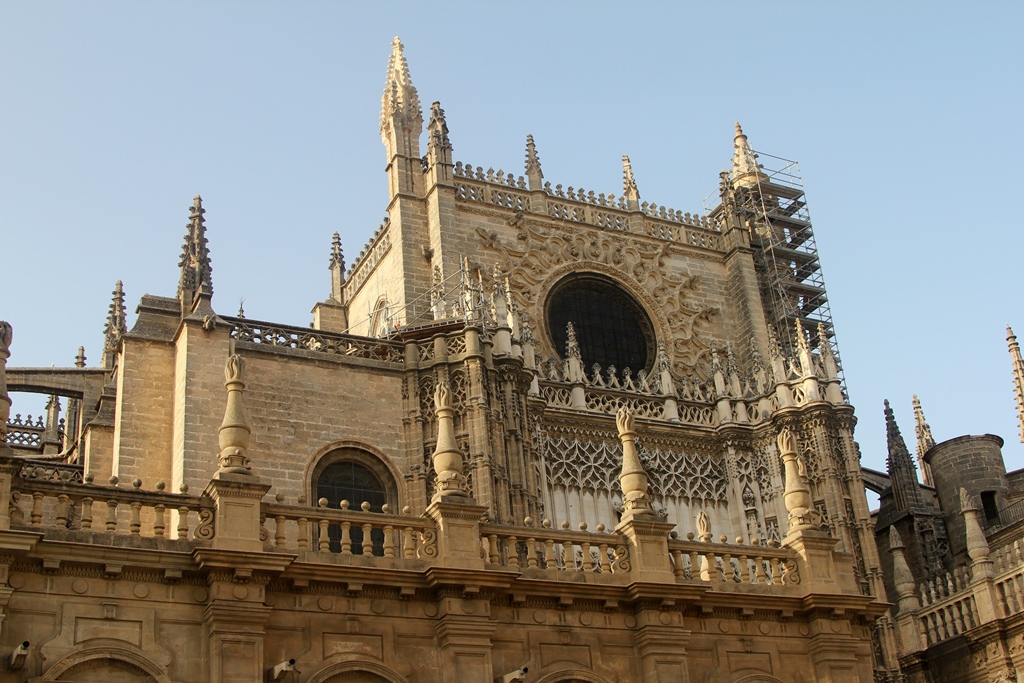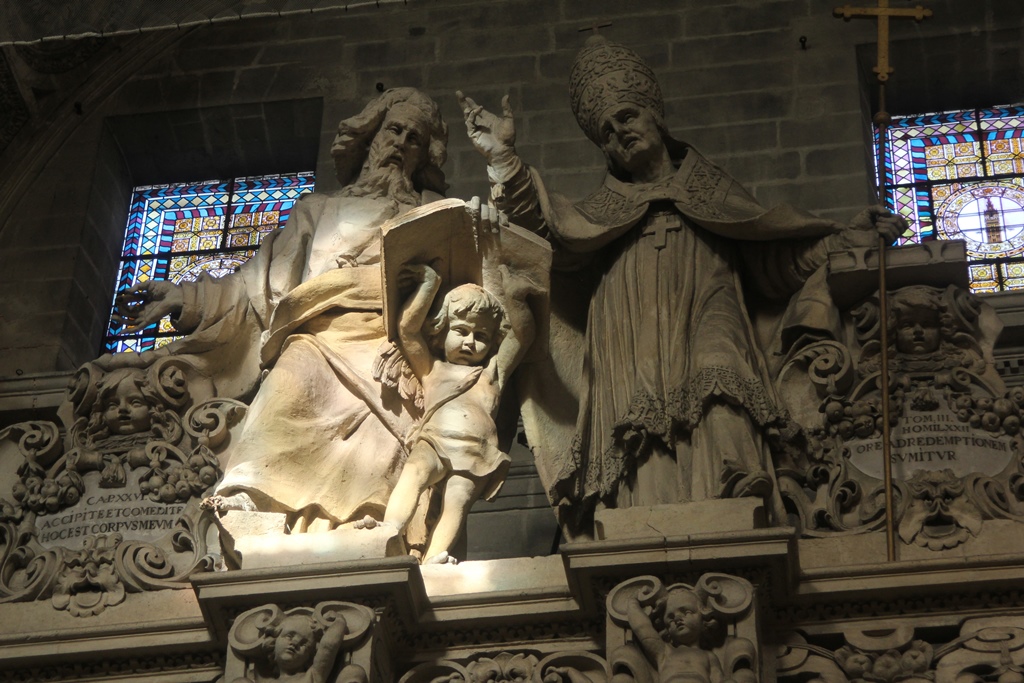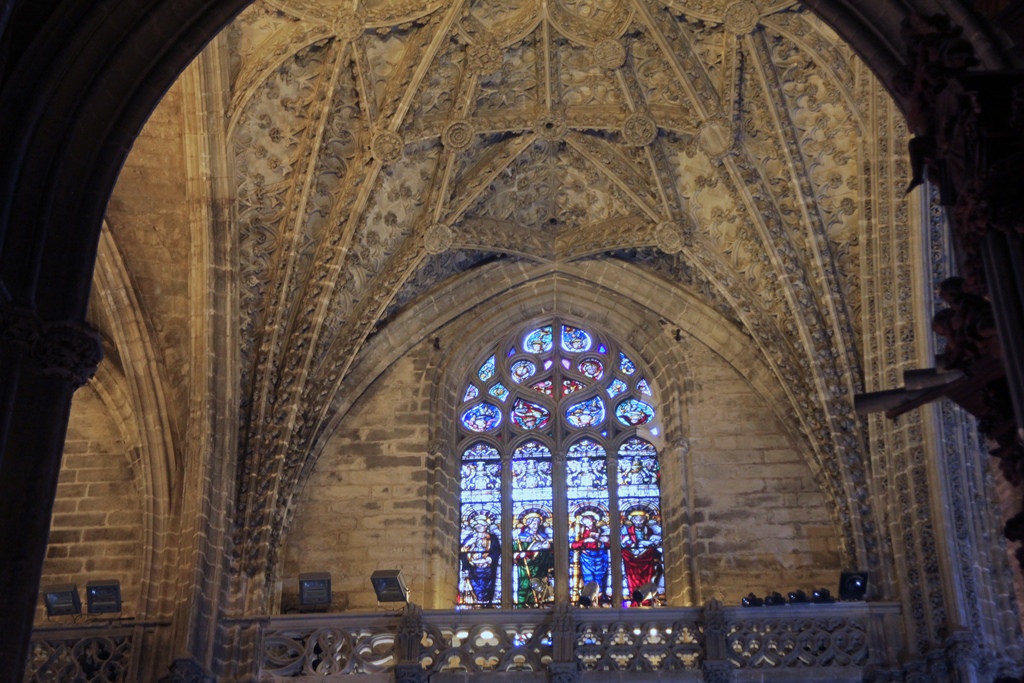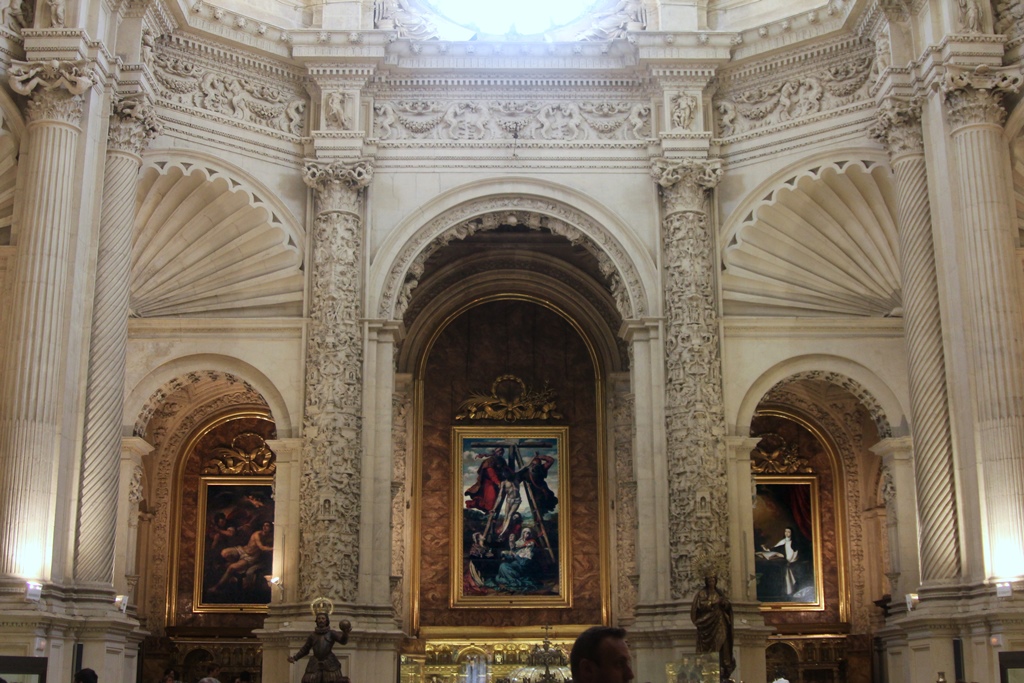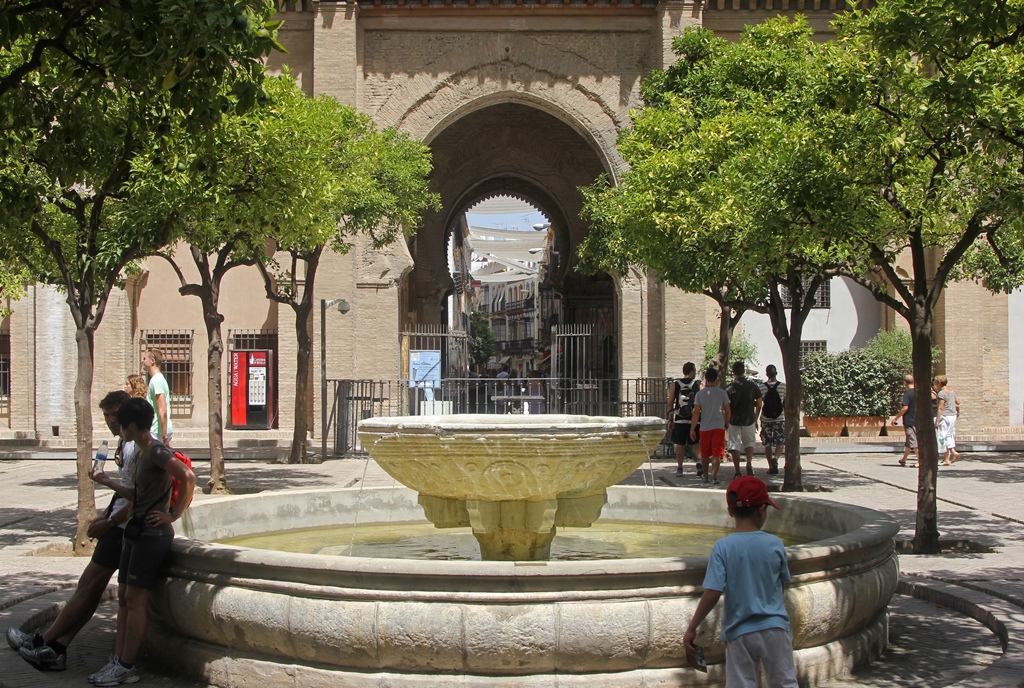The top landmark in the city of Seville would have to be
its cathedral. As stated in
the page for the last time we'd visited,
the Seville Cathedral (AKA Cathedral of St. Mary of the See) is
the largest cathedral in Christendom. Also unfortunately appearing on that page is the half-correct
statement that the cathedral is larger in volume than both St. Peter's Basilica in Rome and St.
Paul's Cathedral in London. While it is comfortably larger than St. Paul's, it occupies just
one-tenth of the volume of St. Peter's. However, it remains the world's largest cathedral, as St.
Peter's (and the also-larger Basilica of the National Shrine of Our Lady of Aparecida, in Brazil) is
not technically a cathedral, as it is not the seat of a bishop. In the realm of cathedrals, not far
behind the Seville Cathedral is New York City's Cathedral of St. John the Divine (under construction
since 1892; also known as St. John the Unfinished), followed by Milan's Duomo. But rankings aside,
the Seville Cathedral is a really big church. It was built between 1401 and 1528 on the site of a
gigantic mosque which had been repurposed for Christian worship since the Reconquista, but
which had fallen into disrepair following some 14th Century earthquakes. Its bell tower, the
Giralda, is a remnant of the mosque, having been adapted from the mosque's minaret by the
addition of bells (duh) and some other stuff on the top. The Giralda is the unofficial symbol of
the city of Seville.
Getting to the cathedral from our hotel involved a fair amount of walking, fortunately on the scenic
side. We headed for the centrally-located Plaza Nueva, from which we followed the Avenida de la
Constitución to the cathedral.
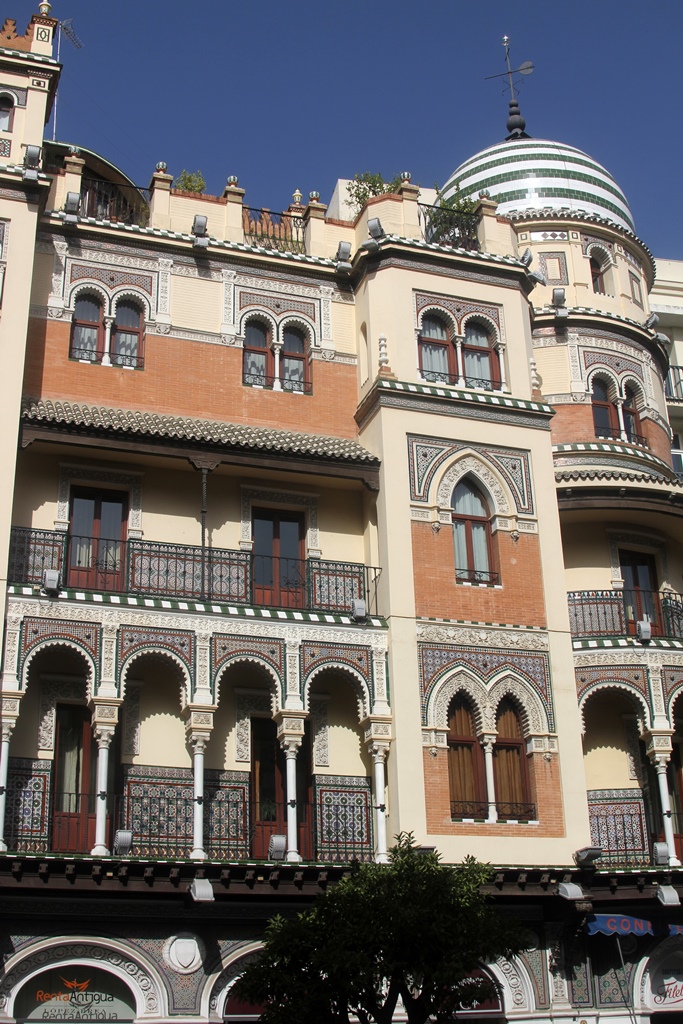
Edificio de La Adriática, Avenida de la Constitución
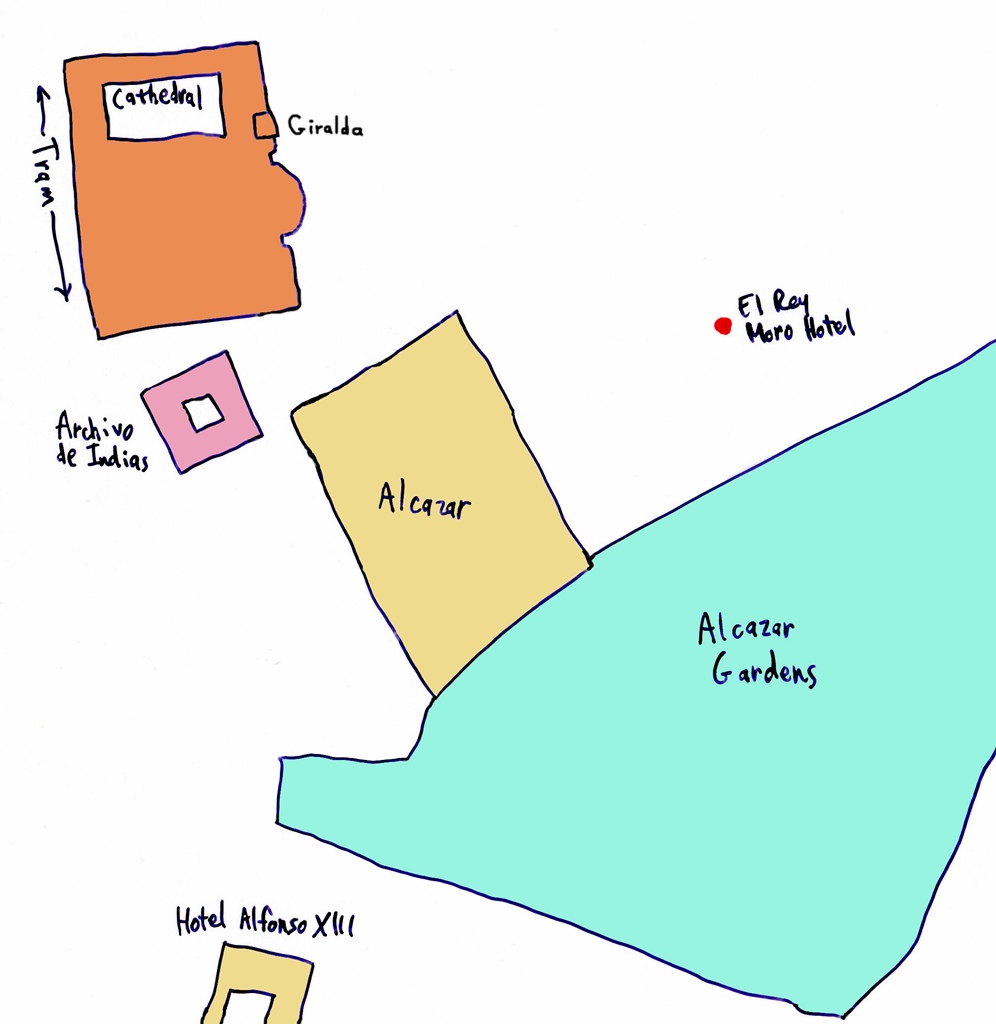
Cathedral/Alcazar Area
The cathedral has no shortage of access points, being surrounded by fifteen doors, all of which are
normally locked, if they open at all. Tourists must pay admission to enter, and there is only one
place where this can be done, by the Prince's Doorway on the south side of the church.
Seville Cathedral
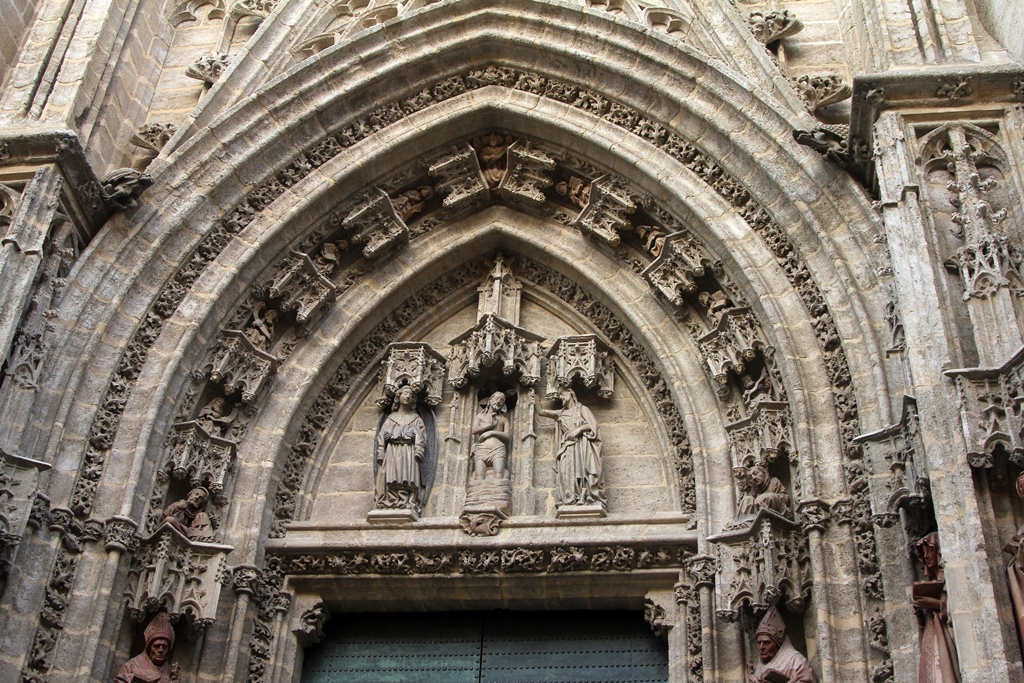
Door of the Baptism
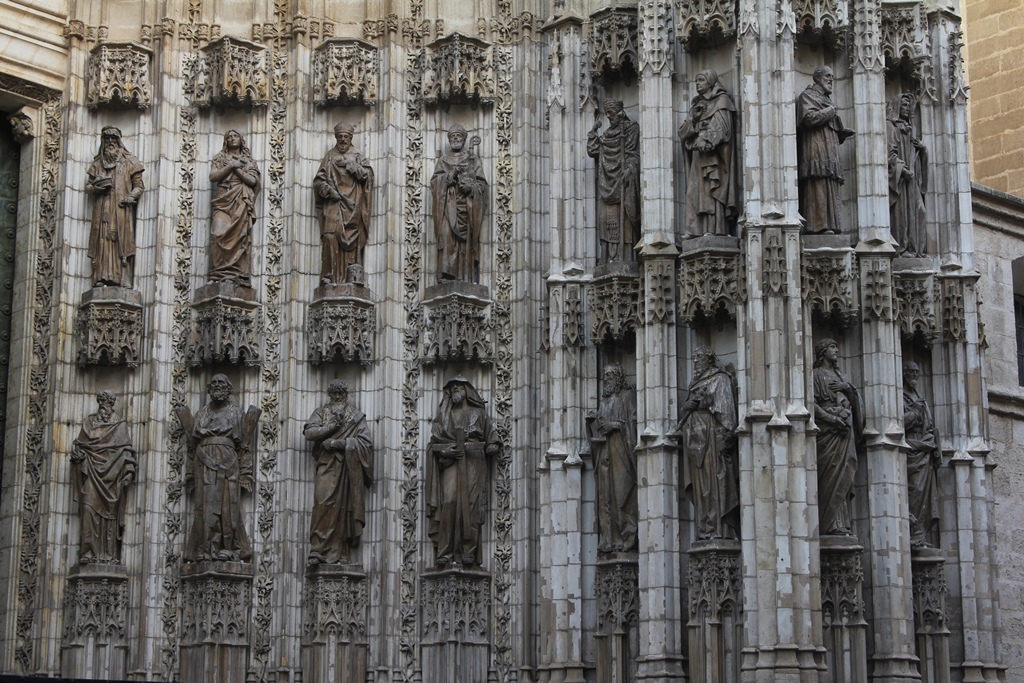
Door frame, Door of the Assumption
But along the Avenida de la Constitución we noticed a relatively unobtrusive door that appeared
to be open, so we went in to investigate, and found ourselves inside the Iglesia del Sagrario.
The Iglesia del Sagrario (Church of the Sanctuary) is a local parish church that happens to be
enclosed by the same walls as the gigantic Seville Cathedral. In addition to its entrance door,
it has a door (normally locked) that connects to the cathedral, and two (also normally locked)
that exit into the cathedral's courtyard, the Patio de los Naranjos (Patio of the Orange
Trees). The church was constructed between 1618 and 1662, and is extensively decorated, mainly
in the baroque persuasion. We had no idea it was there, before we walked into it. It is
probably large for a parish church, but would have to be considered an afterthought when compared
to the cathedral. Nevertheless, the church's main altar is impressive, as are the many altars
and chapels lining both of the church's sides. Lining the walls above the chapels are large
statues of evangelists and "fathers of the church". If I had to guess, I would say the fathers
are the ones wearing the funny hats – I don't remember hearing any stories about evangelists and
funny hats. Maybe televangelists, but they wouldn't count.
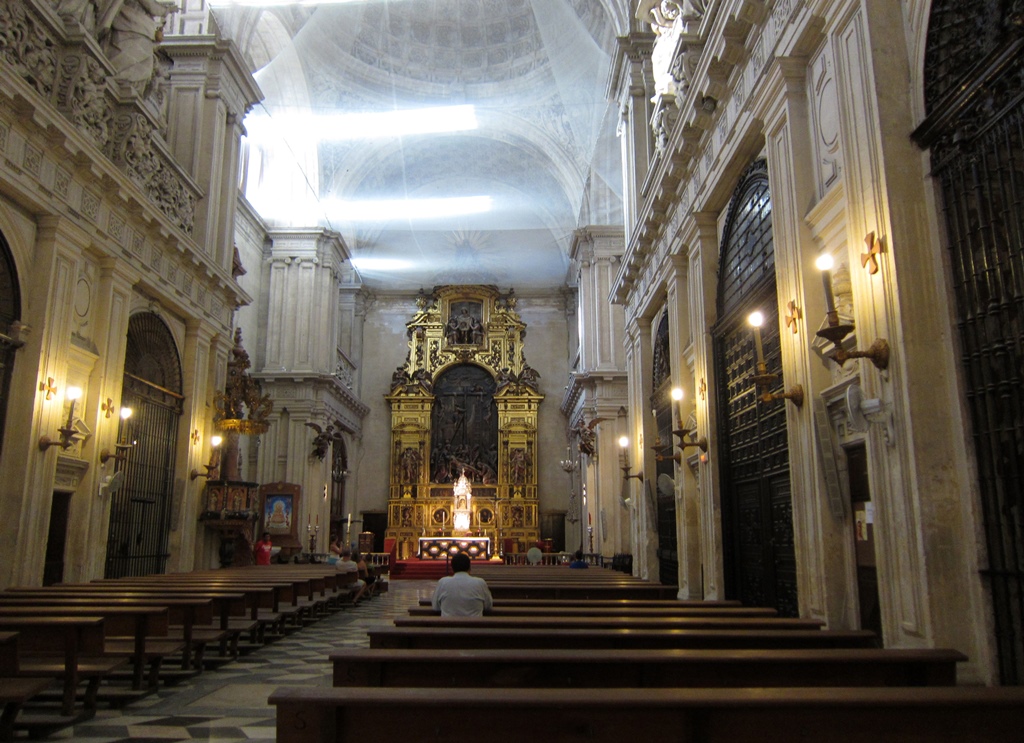
Inside the Iglesia del Sagrario
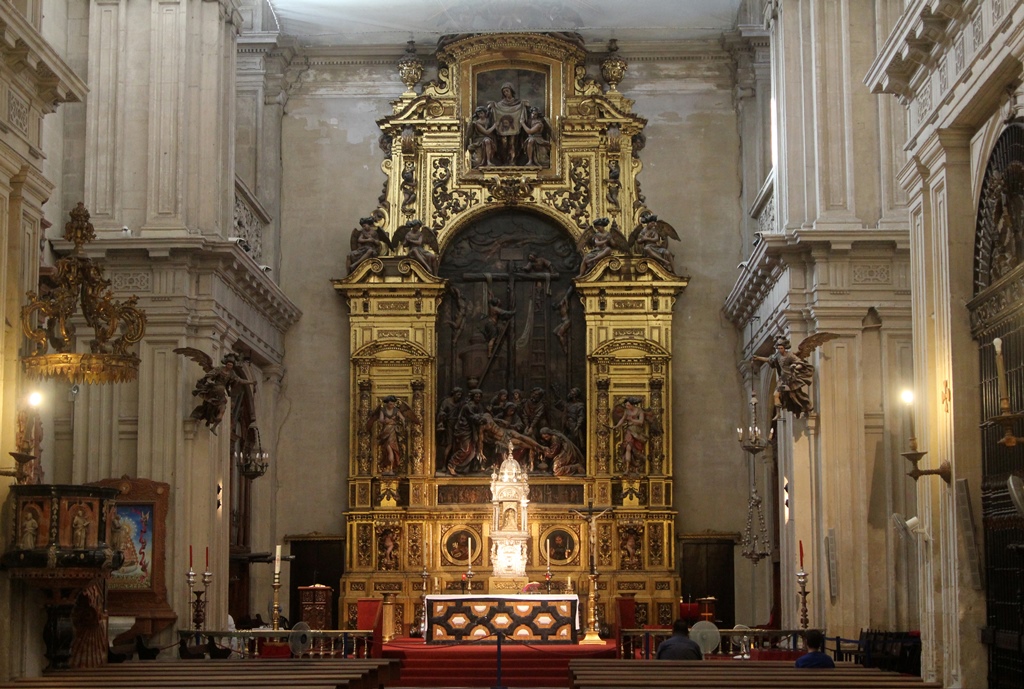
Main Altar (1665-69)
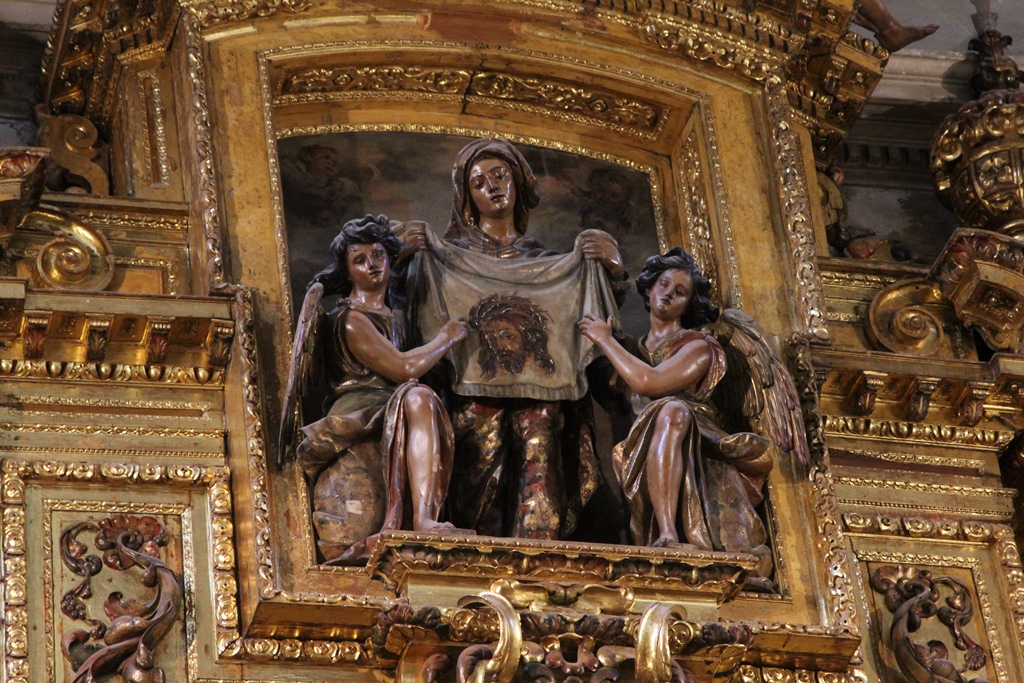
Main Altar Detail - St. Veronica
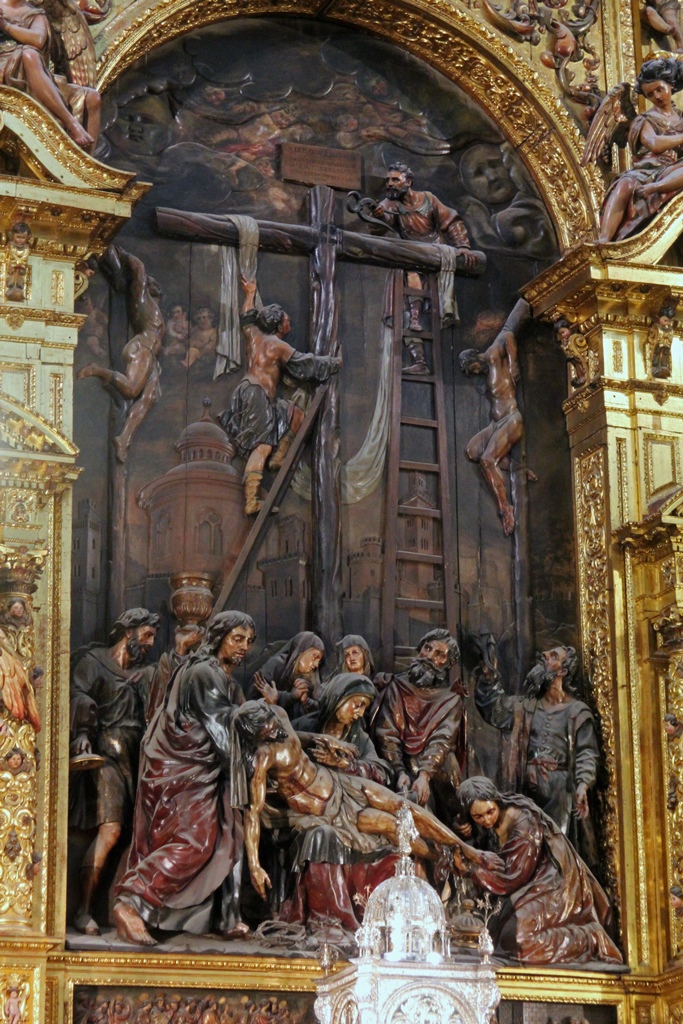
Main Altar Detail - Pieta
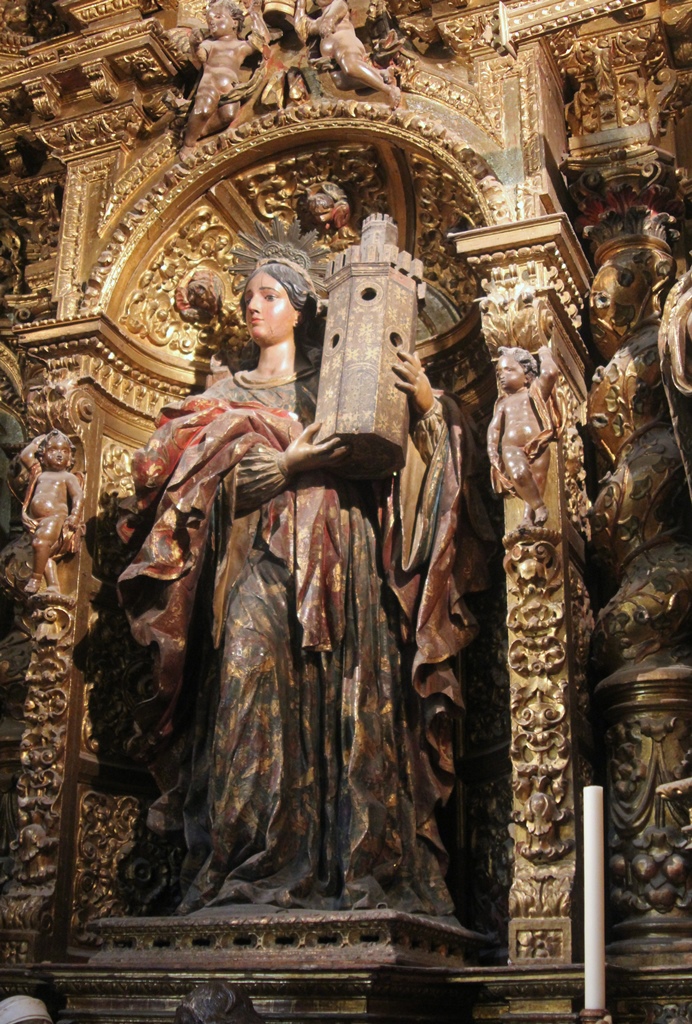
Chapel of Santa Bárbara (ca. 1680)
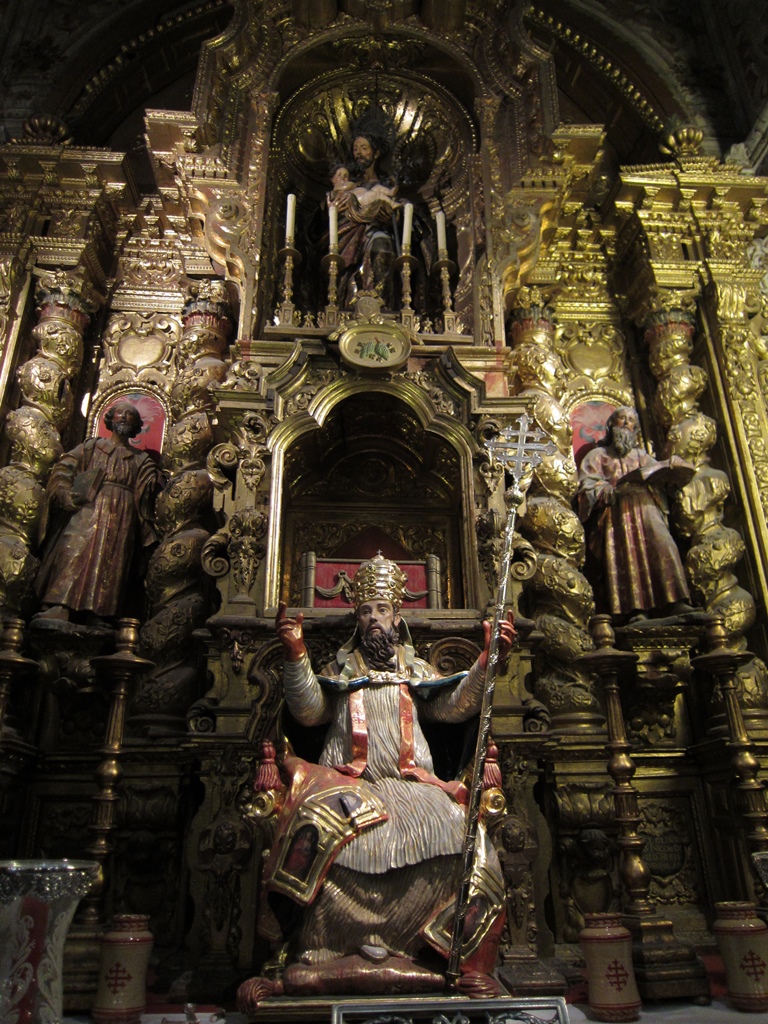
Chapel of San José (1694-98)
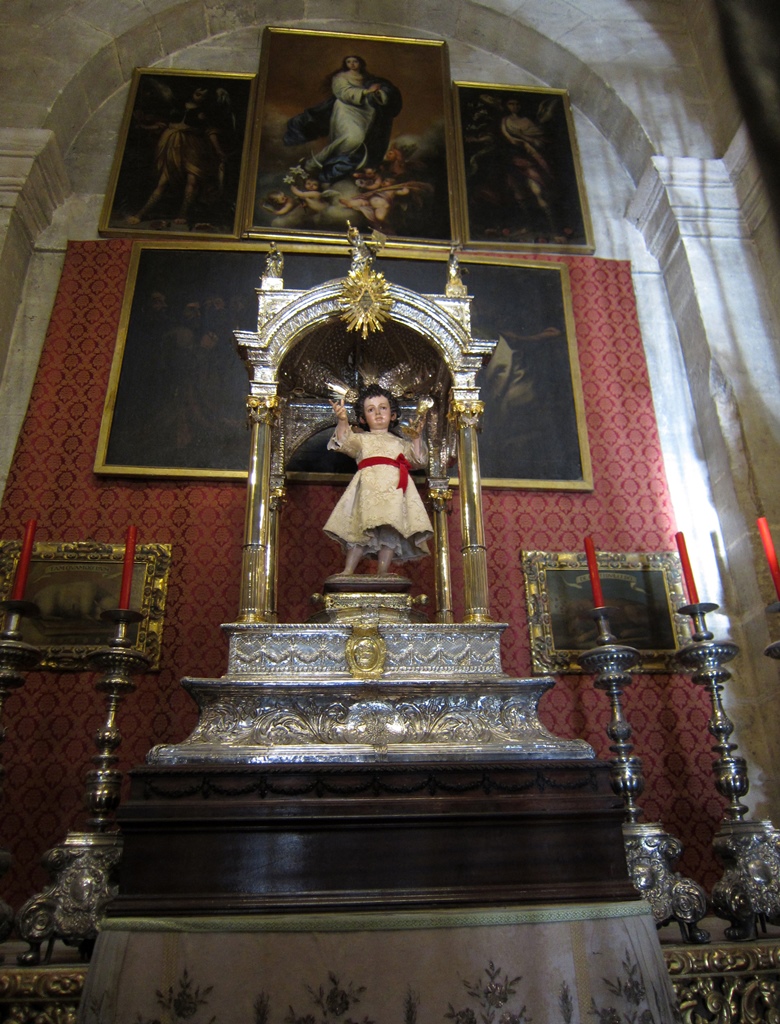
Chapel of the Sacramental Brotherhood (1606)
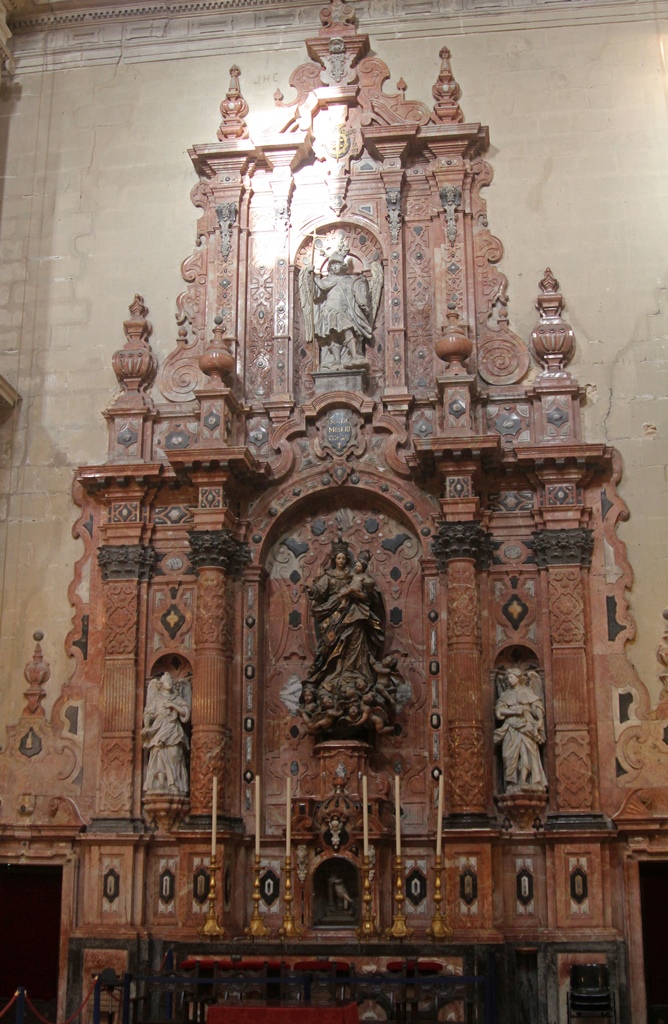
Right-Side Altarpiece - Immaculada
Evangelists and Fathers of Latin Church (1657)
We exited the church and made our way around to the south side of the cathedral, on Plaza del
Triunfo, where we found the Prince's Doorway and the entrance. After standing in line for a
few minutes, we paid our admission fee and went in.
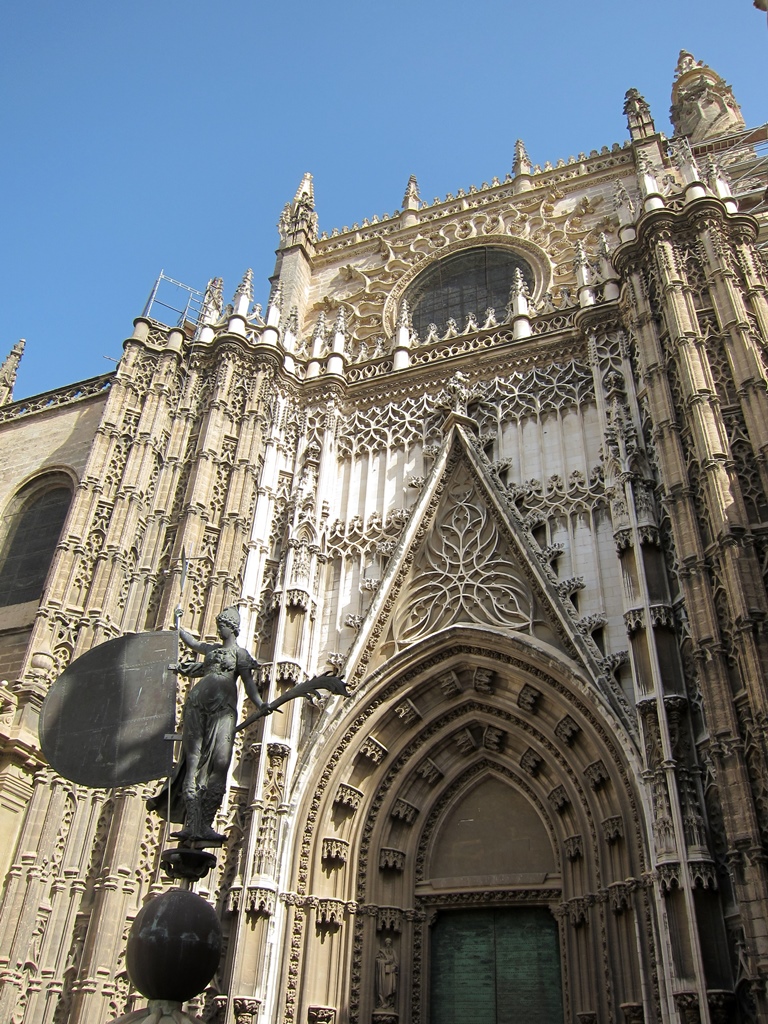
Faith Figure and Prince's Doorway
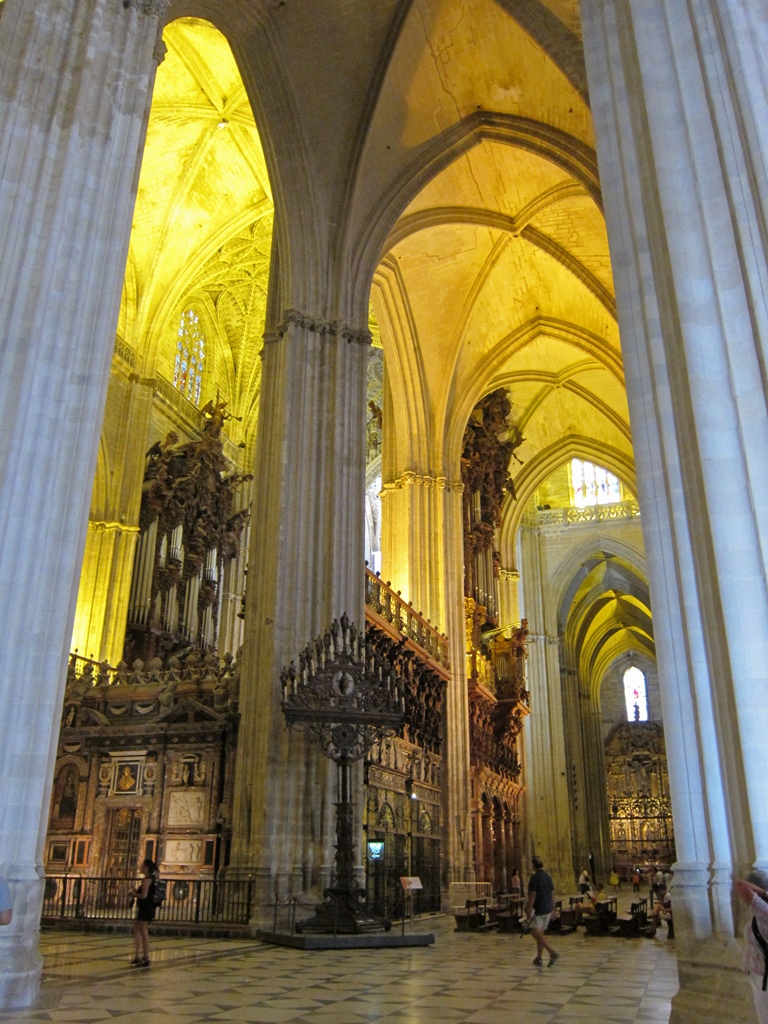
Inside the Cathedral
The most spectacular work of art displayed in the cathedral is probably the gigantic 66-foot
altarpiece found in the cathedral's main chapel, or Capilla Mayor. Completed in 1564, it was the
life's work of Flemish artist Pierre Dancart, and it is a sight to behold. Unfortunately, we
weren't able to behold it, as the altarpiece was under restoration on this trip. The lower part
of the altarpiece was behind plywood, and the rest was behind what appeared to be a huge plastic
sheet with an unconvincing version of the altarpiece imprinted on it. But we did take some
pictures of the altarpiece on our previous visit to Seville, so you should check
that page for
some idea of what it looks like. For what it's worth, the back side of the Capilla Mayor looked
fine.
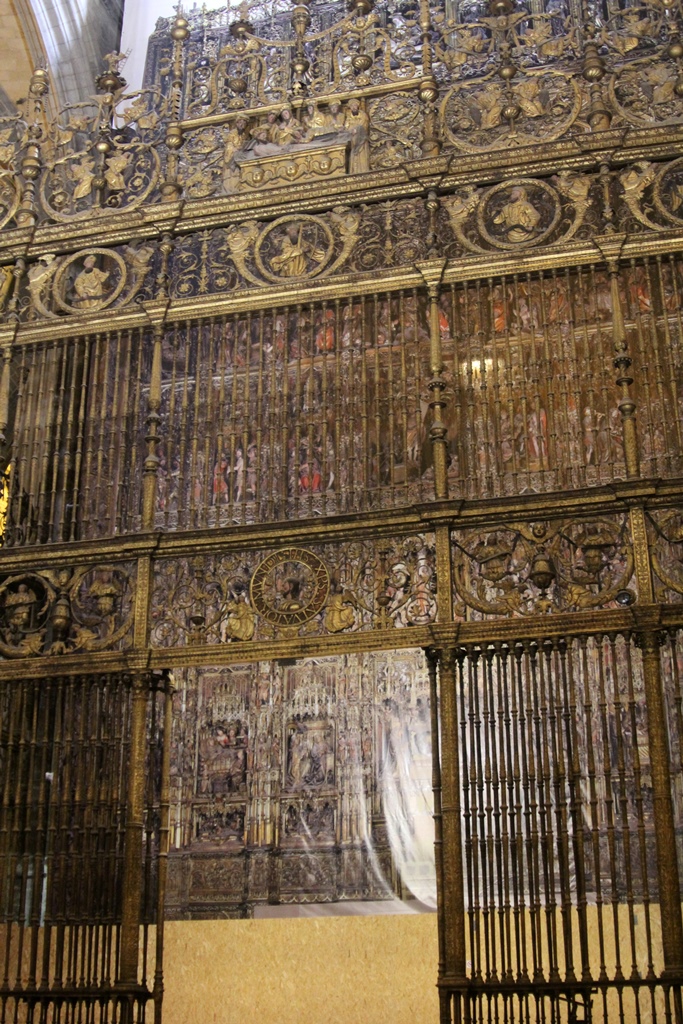
Main Chapel, Undergoing Renovation
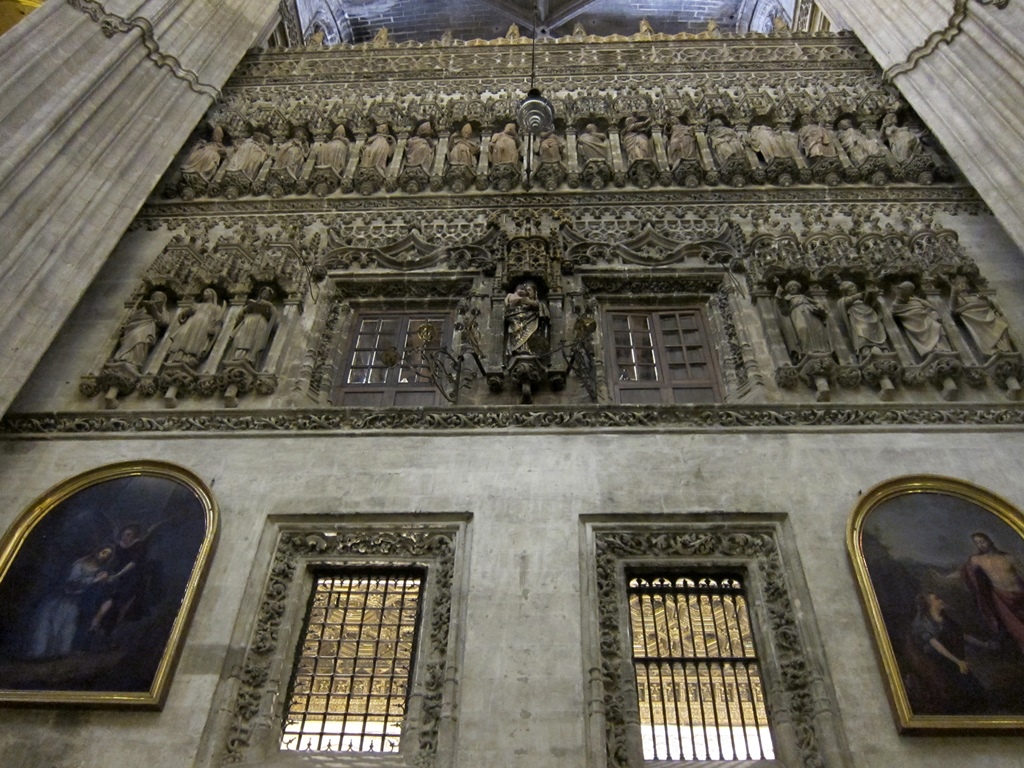
Rear Wall of Main Chapel
Directly across from the main chapel is the cathedral's choir, and while we couldn't actually
enter it, we had a pretty good view of everything through the choir's grille. The choir was flanked
by two immense 1901 pipe organs, which could be seen on both the inside and outside of the choir
walls. On the outside, there was also an elaborate side entrance to the choir.
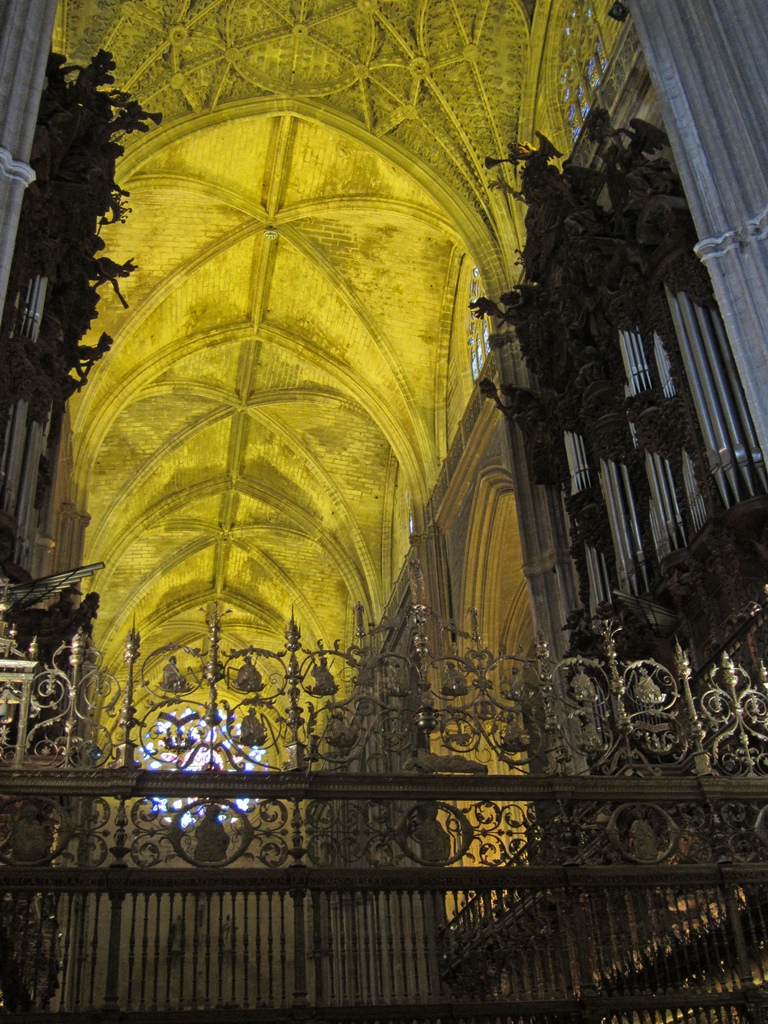
Above the Choir
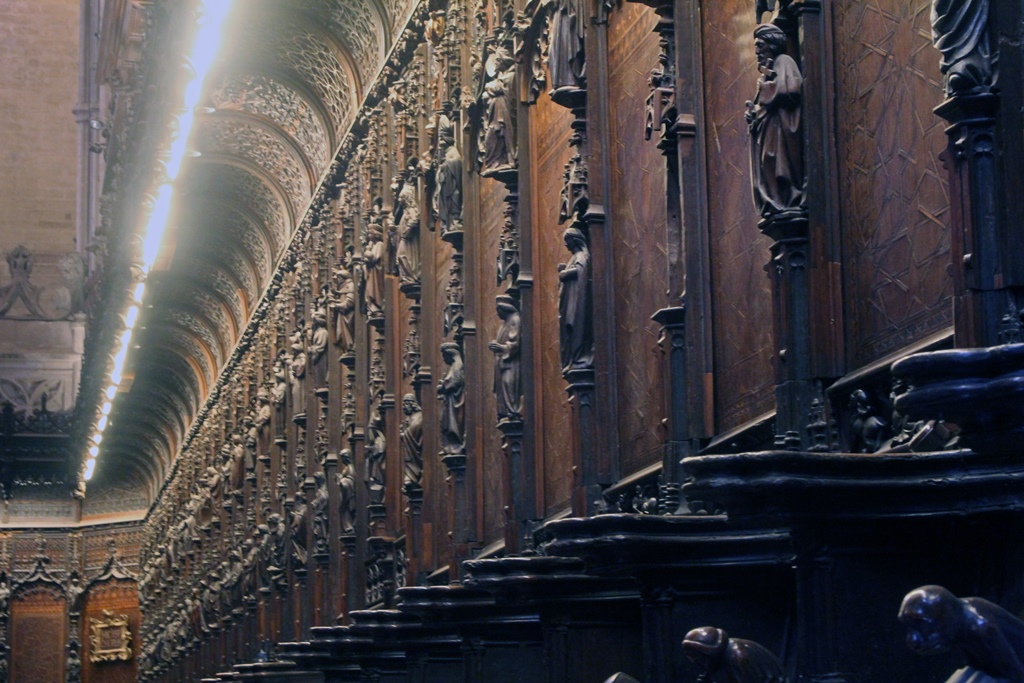
Choir Stalls
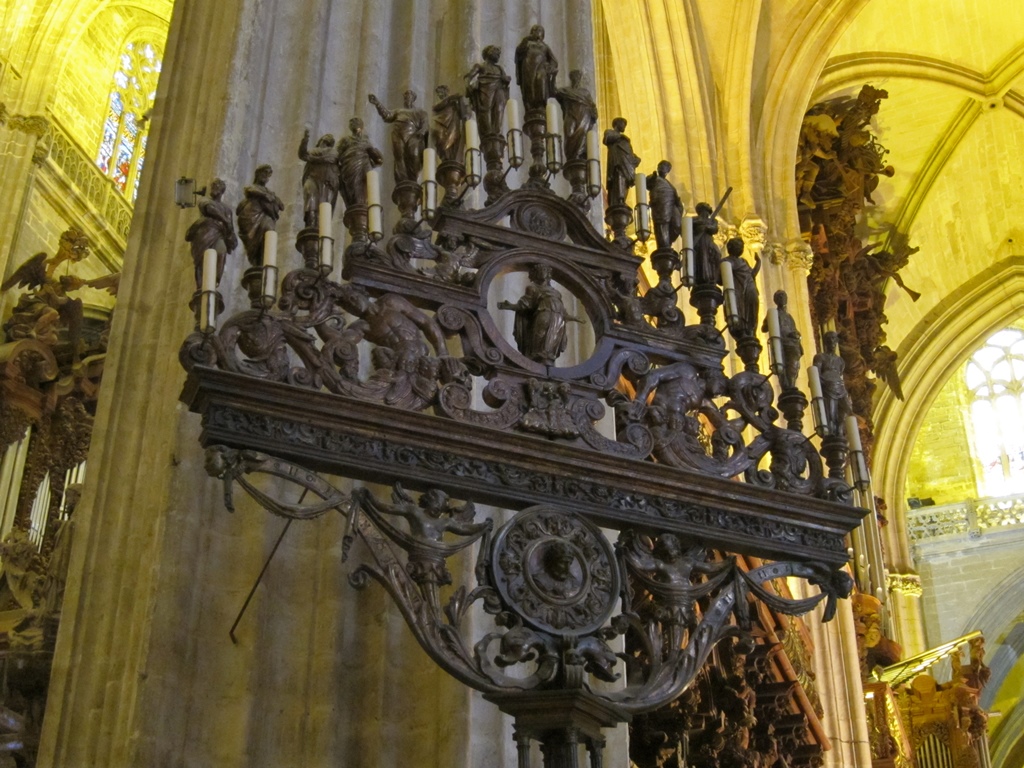
Candlestick

Wooden Carvings and Organ
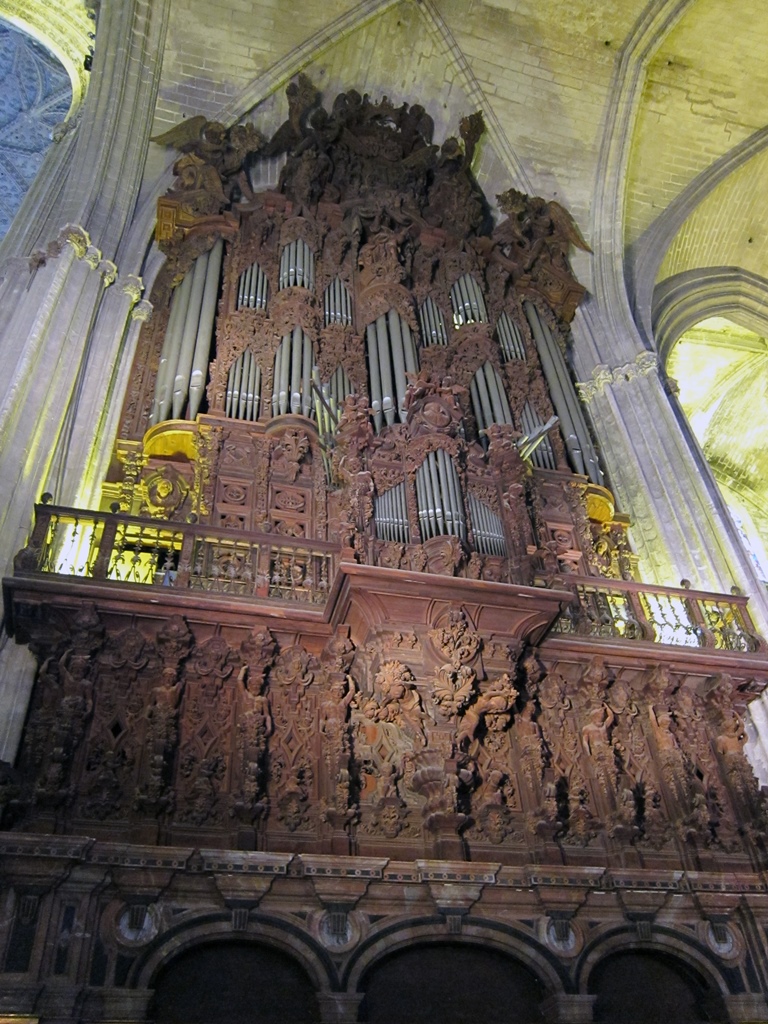
Organ
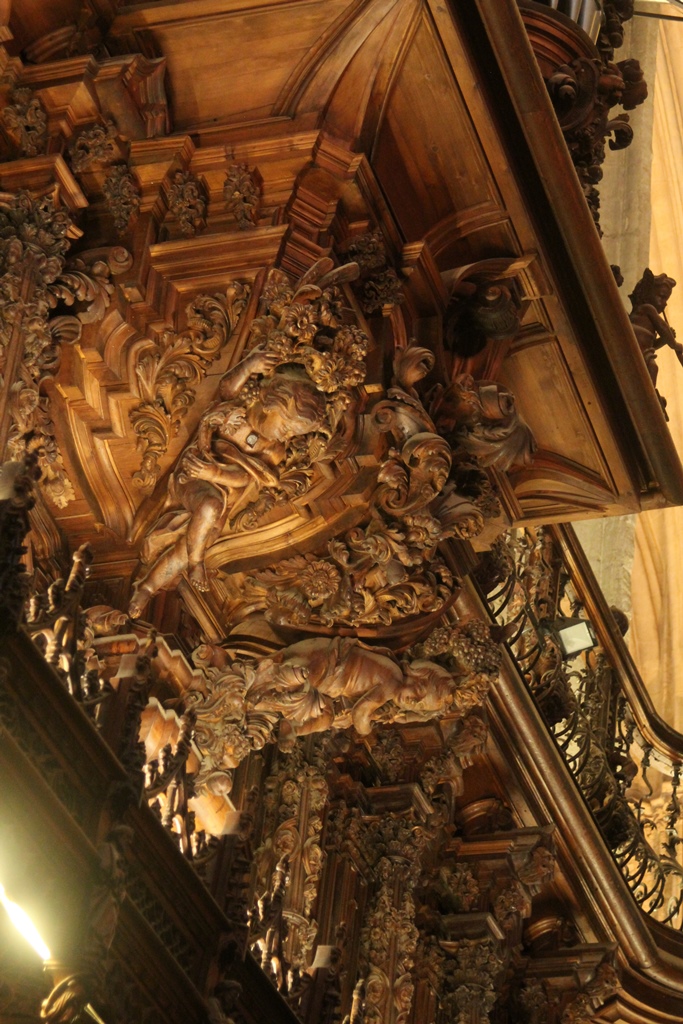
Wooden Carvings Below Organ
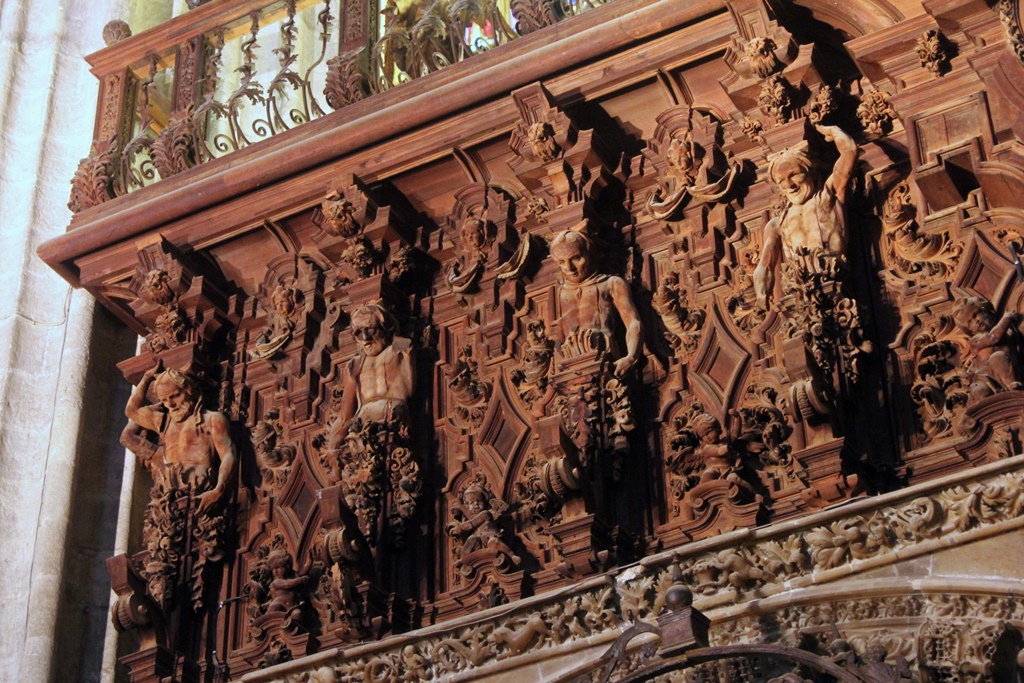
Wooden Carvings Outside Choir
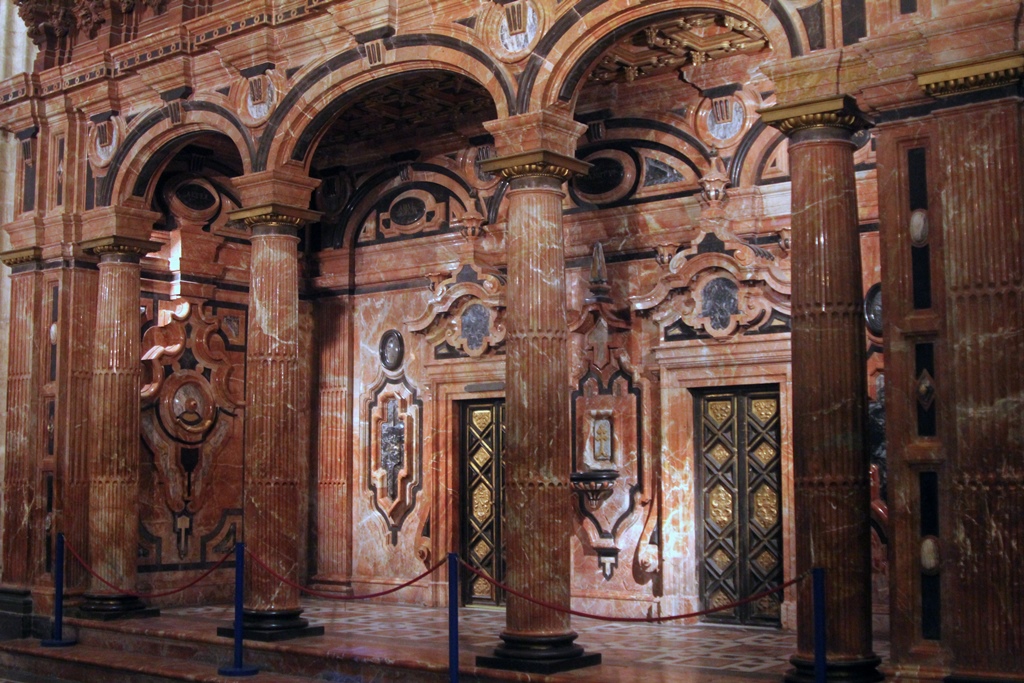
Side Entrance to Choir
Distributed mostly along the outer walls of the cathedral are 80 chapels, mainly dedicated to an
assortment of saints. Each chapel is a work of art on its own, with most sporting elaborately
carved altarpieces. Often there are paintings as well, and sometimes there are tombs. Here are
some photos of chapels and altars not covered on the last trip's web page (or at least not in
exactly the same way):

Capilla de la Estrella (1566)
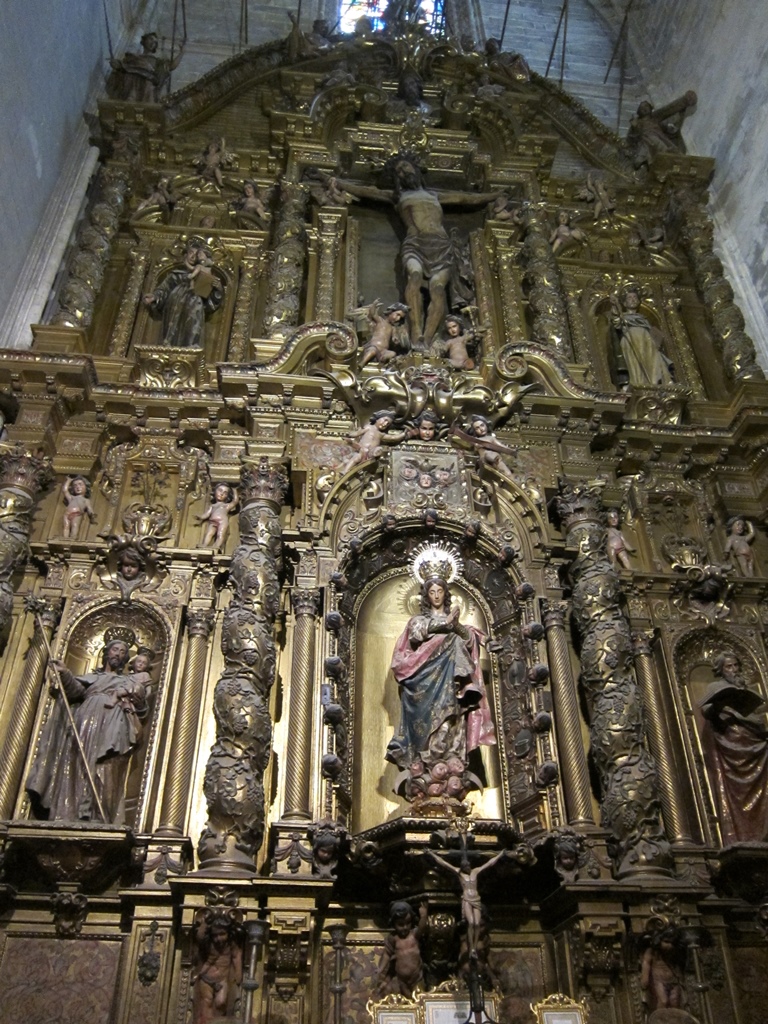
Capilla de San Pablo (1656)
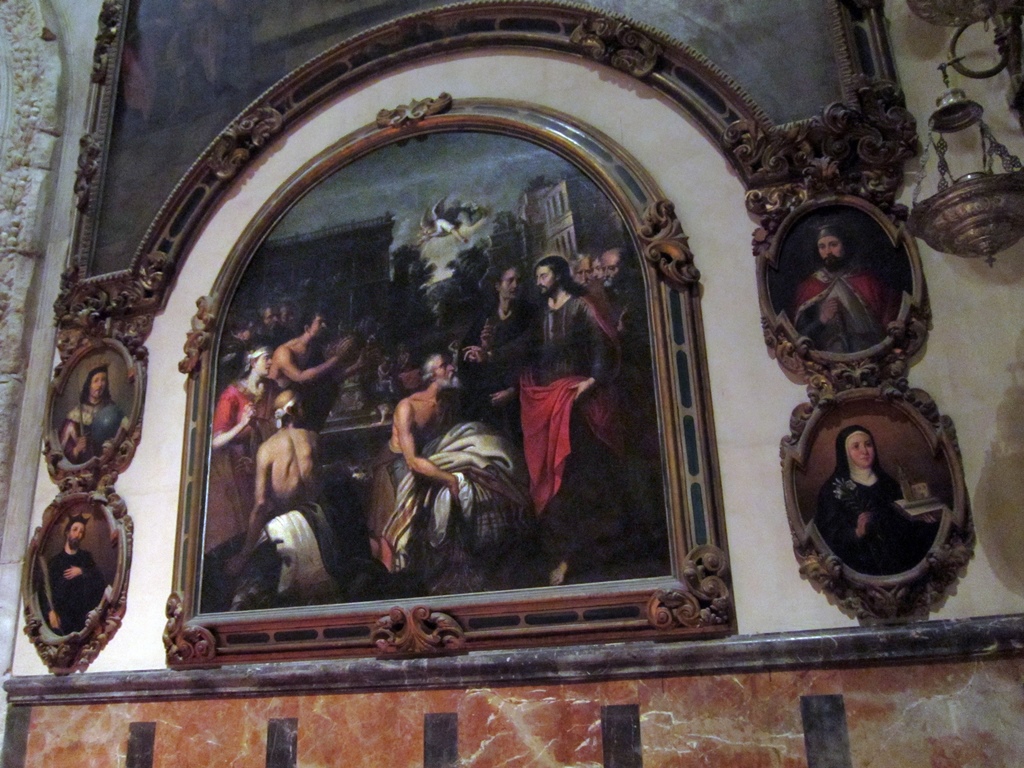
Capilla de la Virgen de la Antigua - Christ Healing the Blind
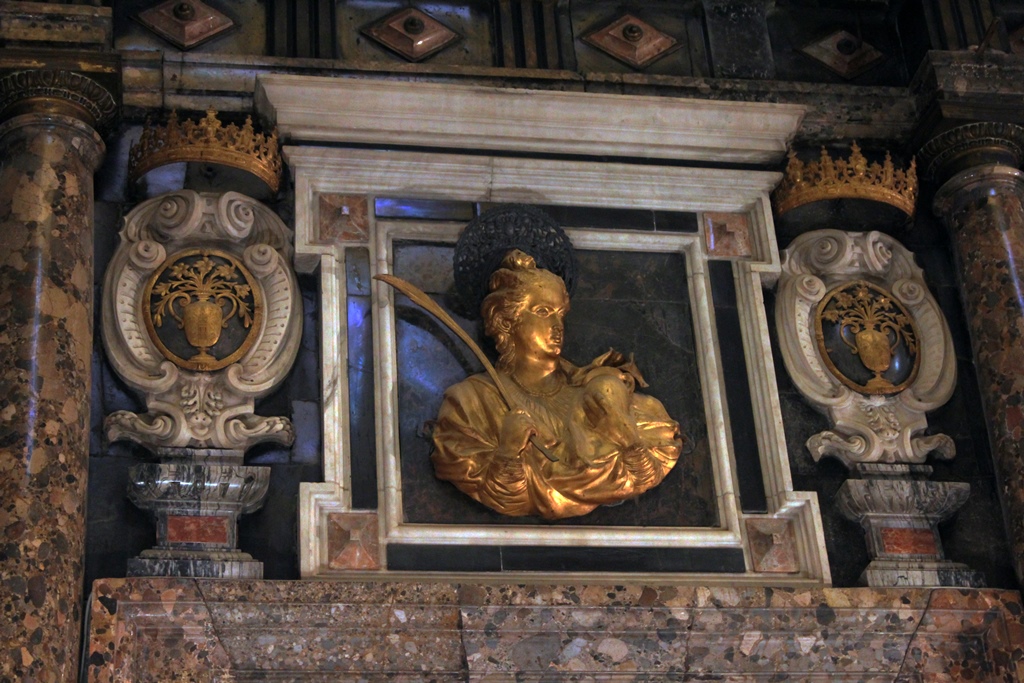
Altar of the Trascoro - Bust of Santa Justa (1619)
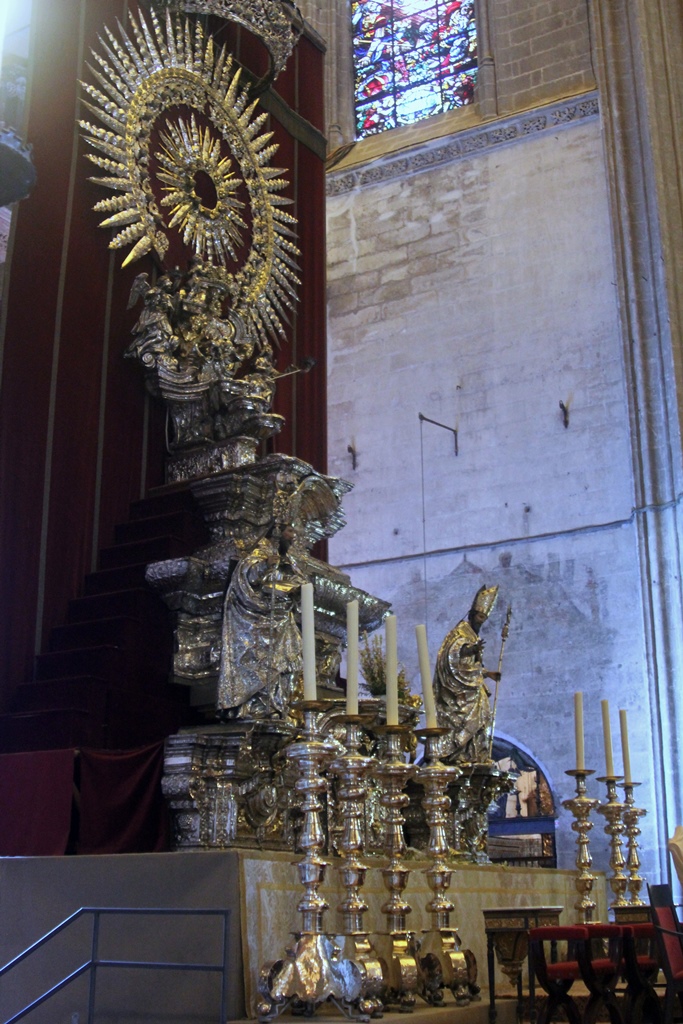
Altar de Plata (ca. 1700)
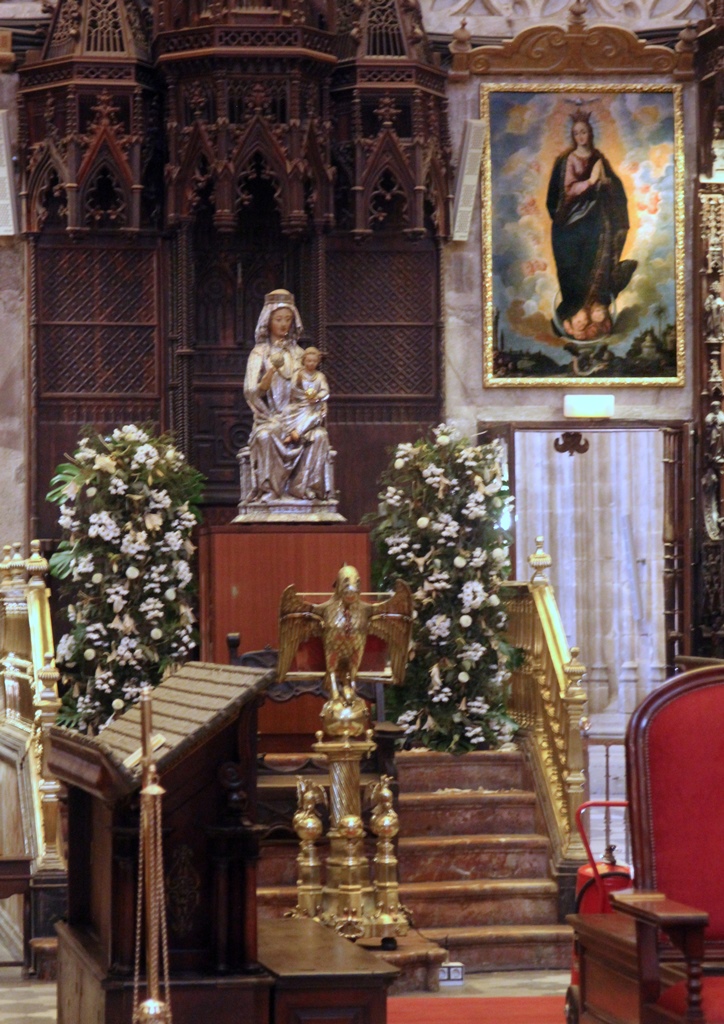
Small Altar
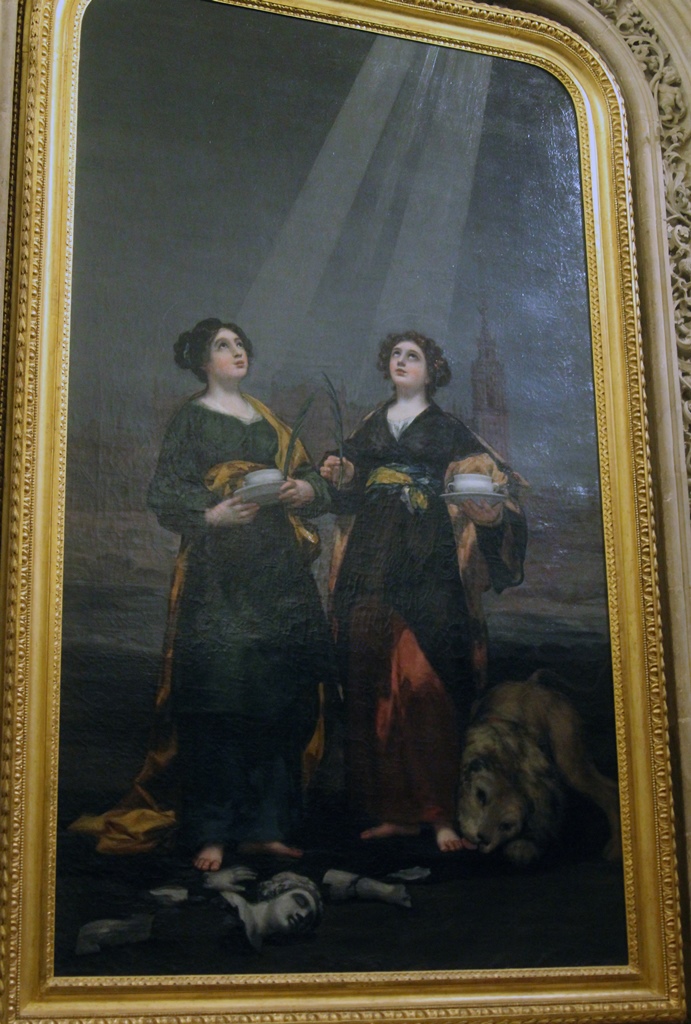
Santa Justa y Santa Rufina, Francisco de Goya (1817)
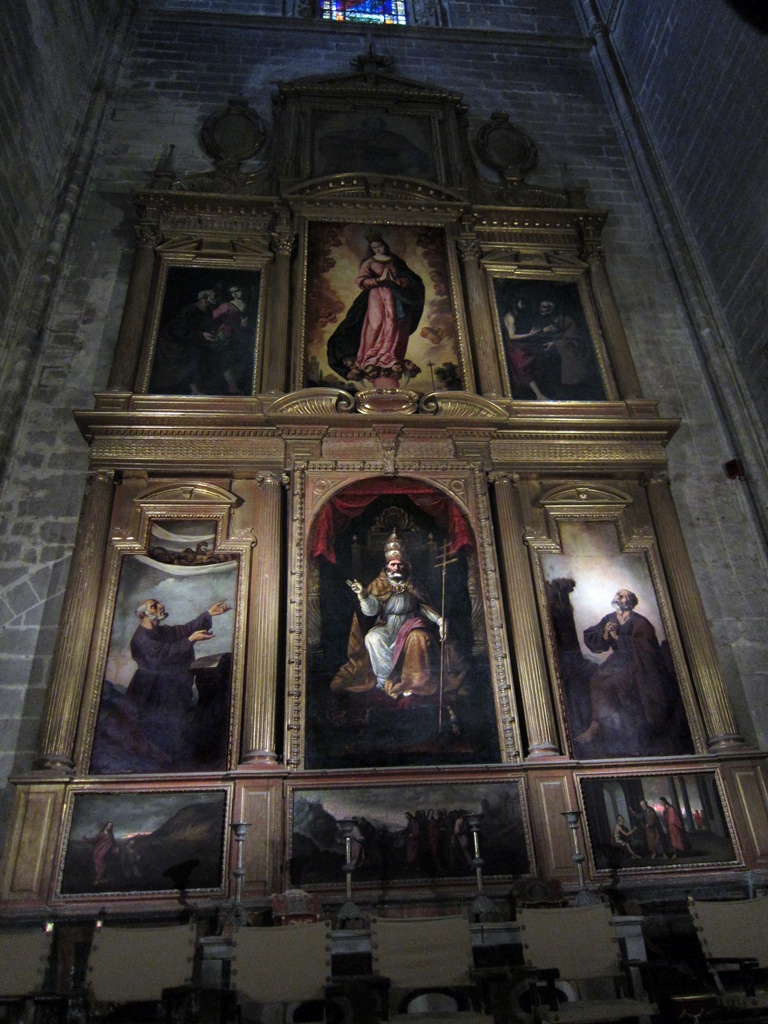
Capilla de San Francisco, Altarpiece of San Pedro
The most celebrated tomb in the cathedral is that of Christopher Columbus. In this tomb, which
dates from 1898, Columbus is borne on a stretcher by figures representing the four Spanish kingdoms
of Castille, Aragon, León and Navarre.
The previous Seville page
discusses the centuries-long saga of Columbus's remains.
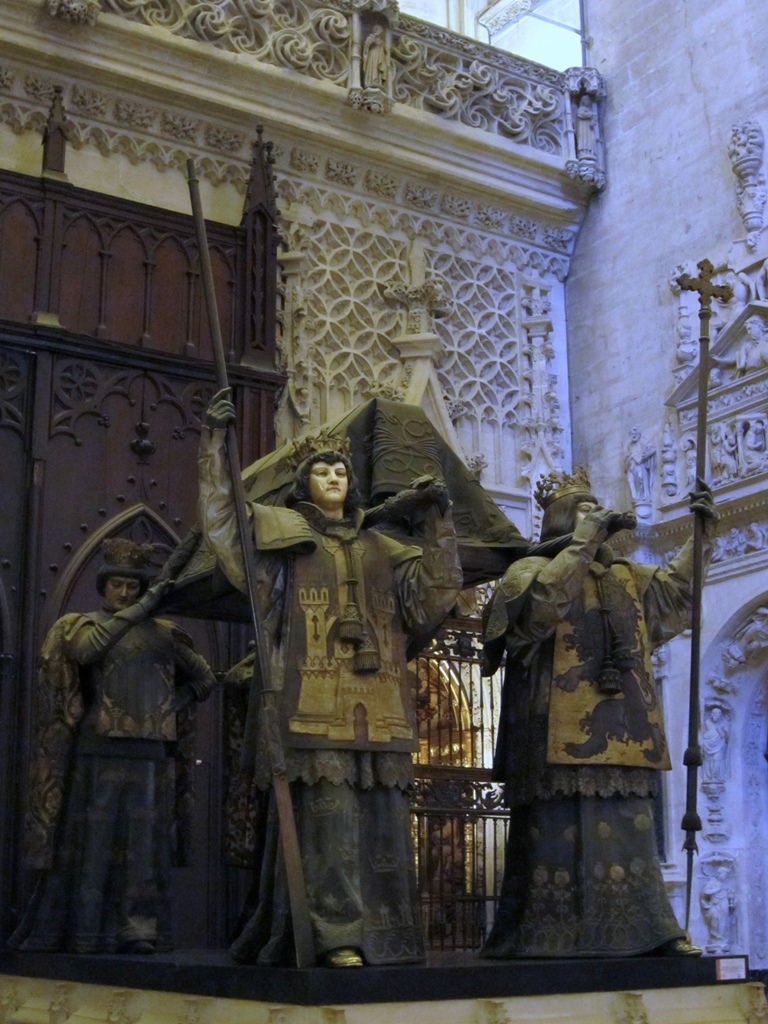
Tomb of Christopher Columbus
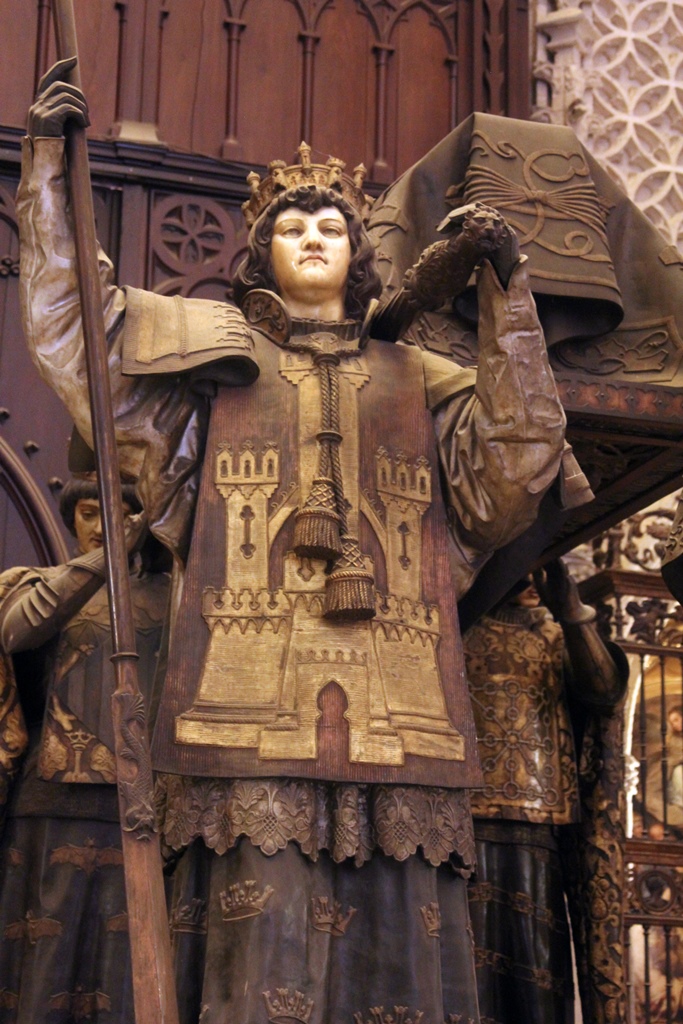
Tomb of Columbus - Castile Bearer
As with any reputable cathedral, Seville's displays an impressive amount of stained glass.
Vaulting and Stained Glass
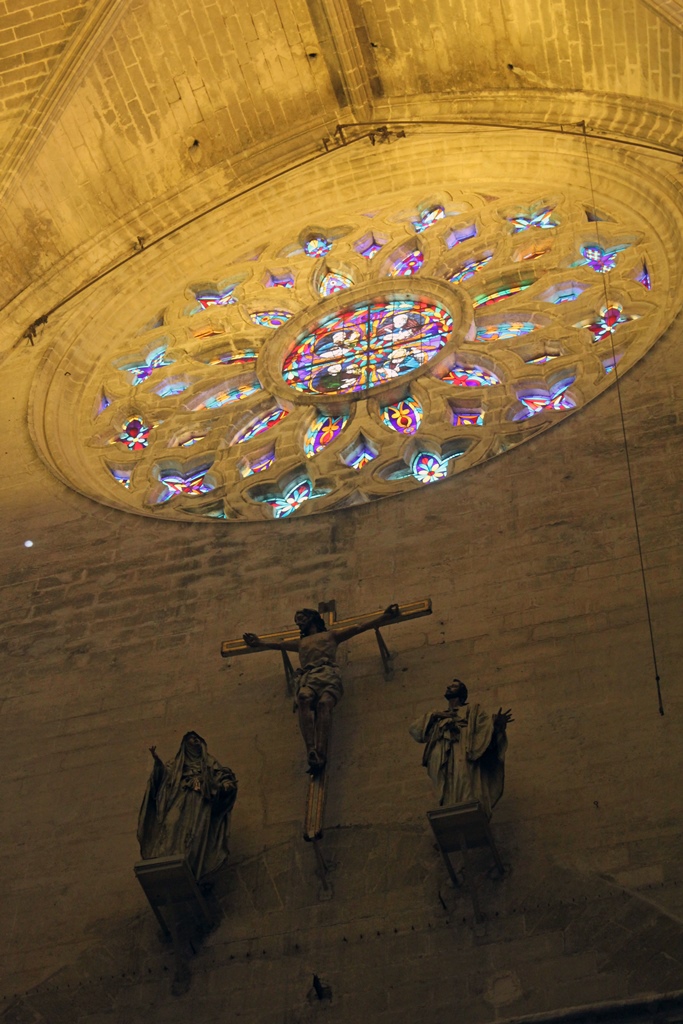
Above Puerta de la Asunción
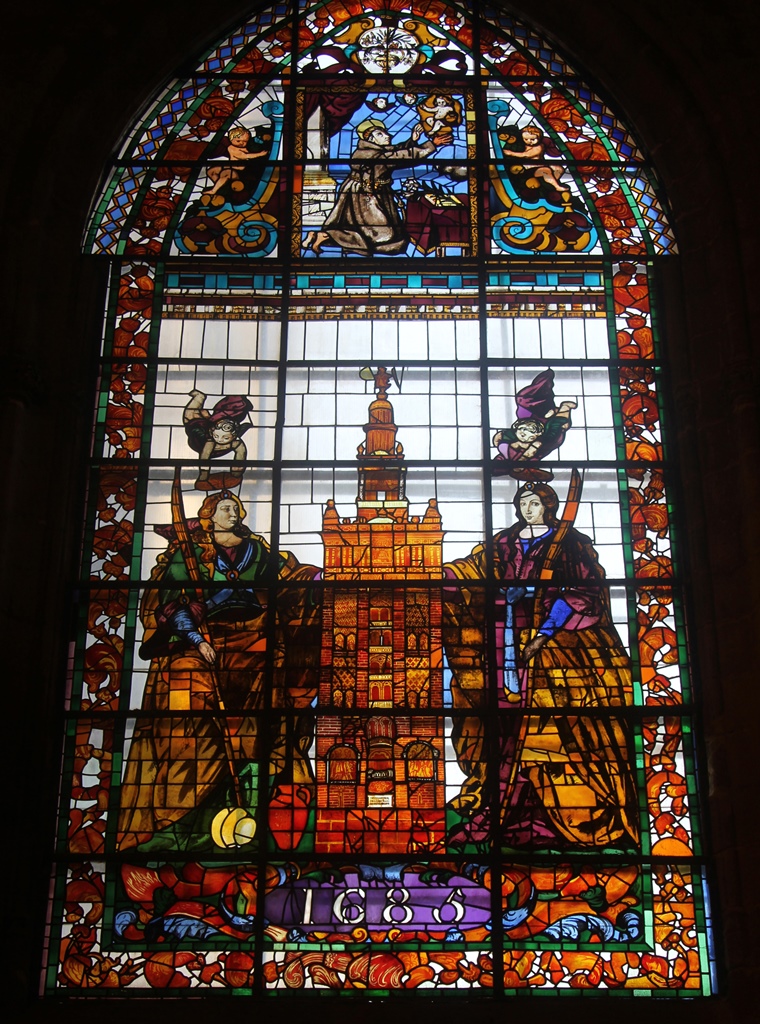
Santa Justa and Santa Rufina Protecting the Giralda

Stained Glass and Ceiling

Highlights, Nella and Philip
The cathedral also exhibits several highly valued objects in its Treasury (processional crosses,
monstrances, reliquaries, etc.). The Treasury begins in the cathedral's Greater Sacristy and winds
through a few additional rooms.
Greater Sacristy
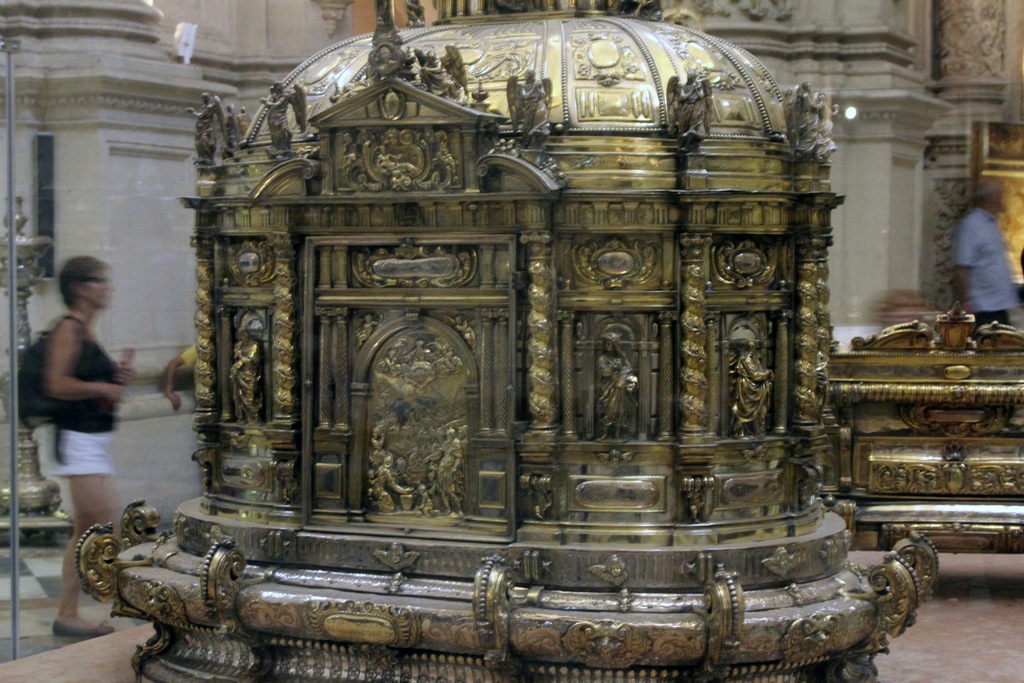
Large Monstrance
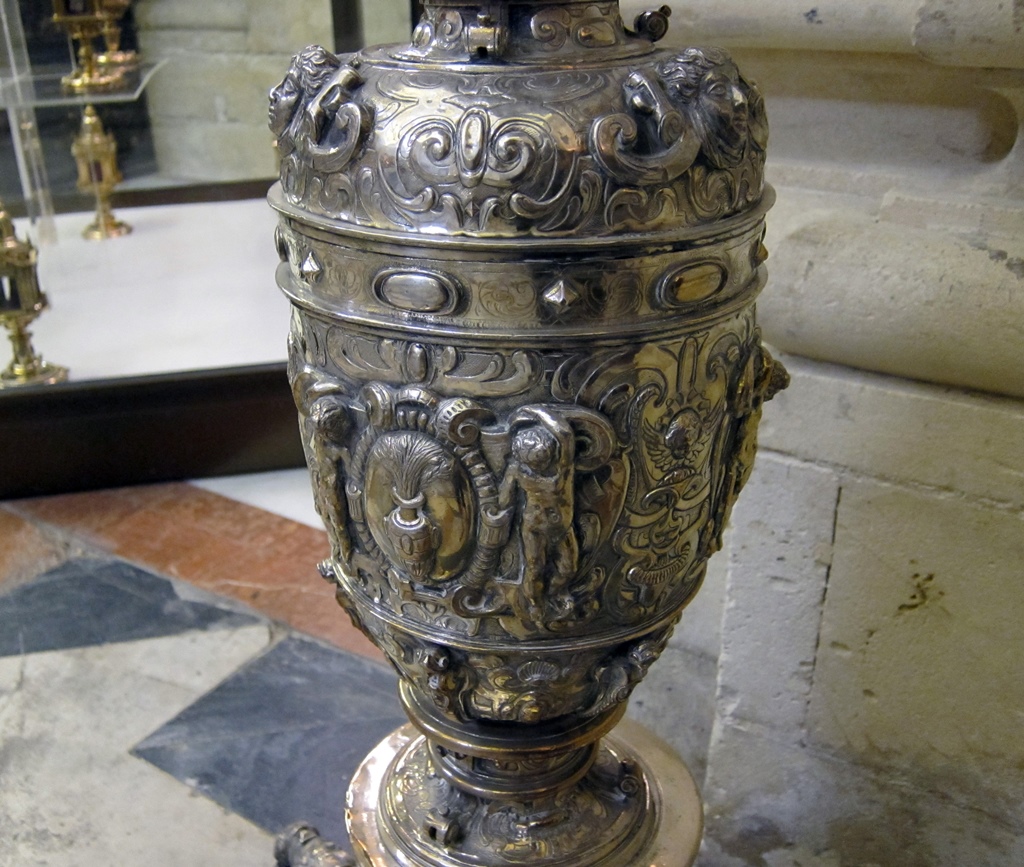
Candlestick Detail
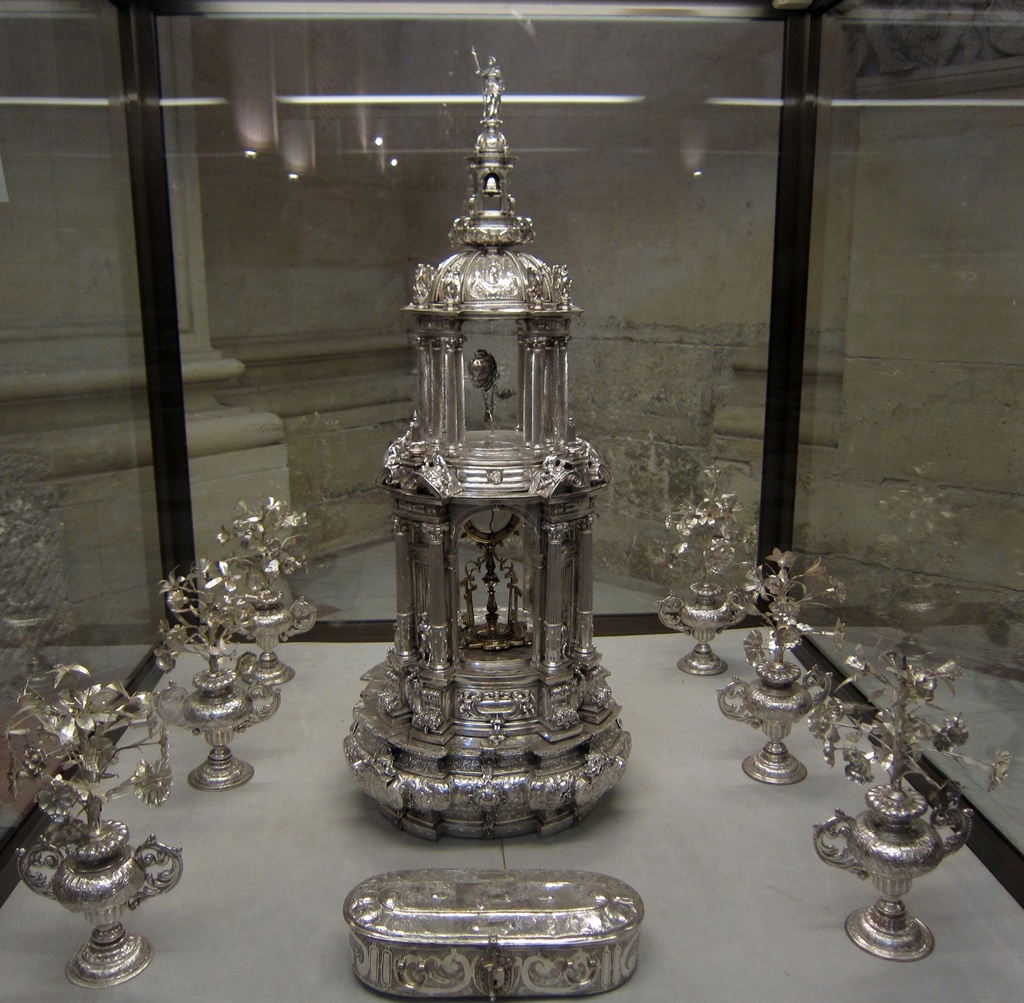
Silver Reliquary (16th-17th C.) and Lilies (18th C.)
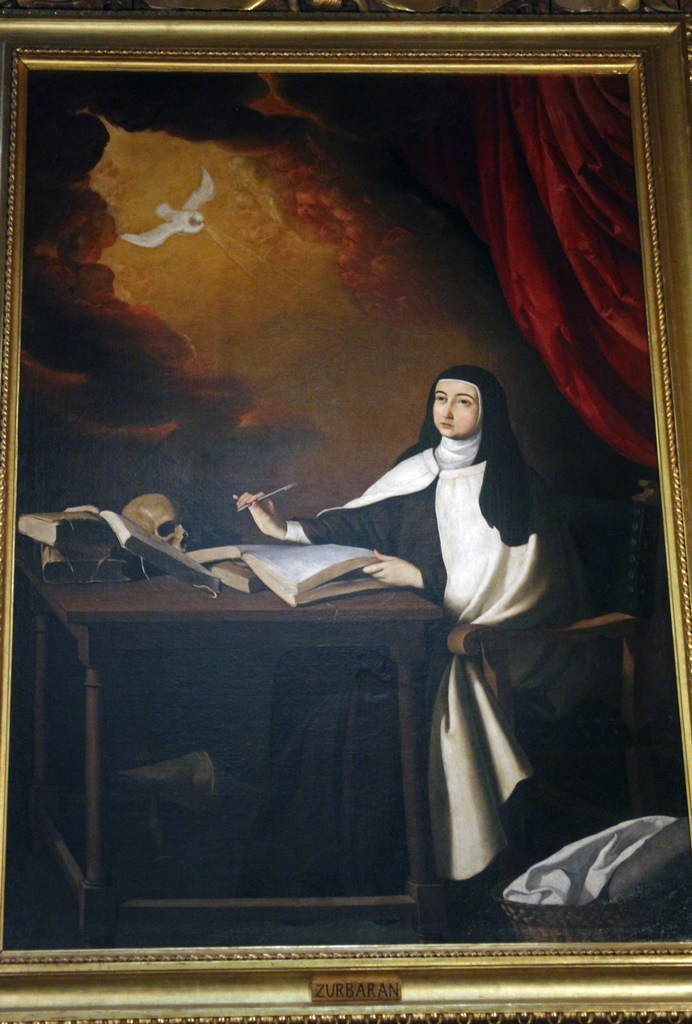
Santa Teresa de Jesús, Francisco de Zurbarán (1650)
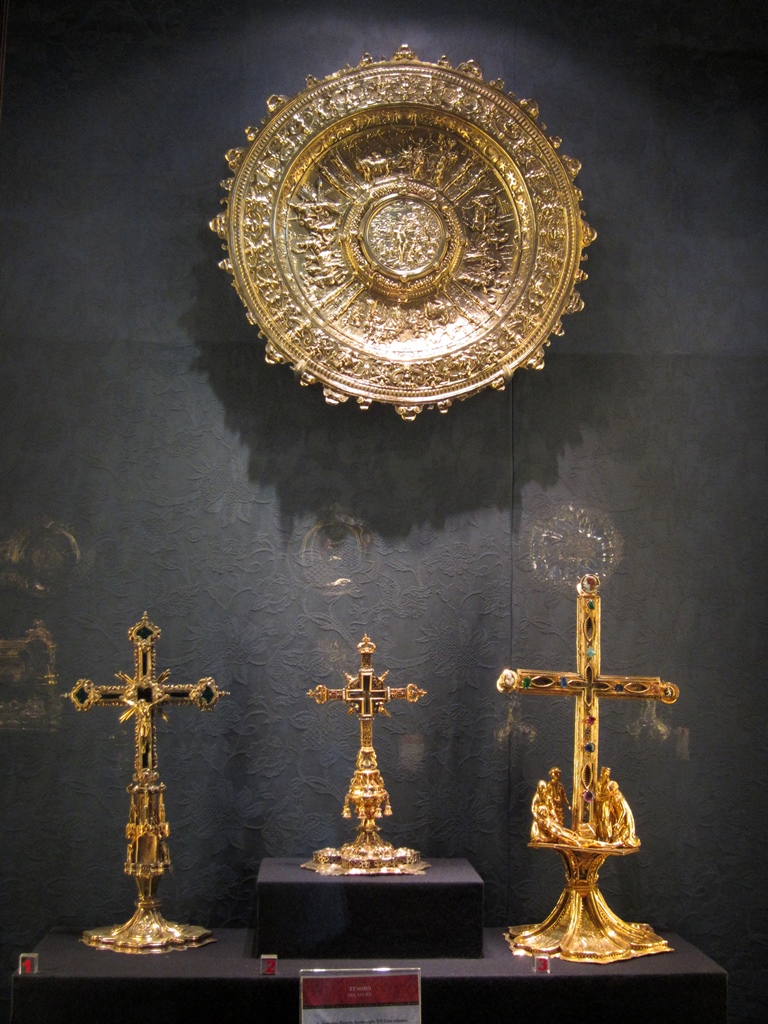
Tray (Antwerp, 16th C.), Crosses (14th-16th C.)
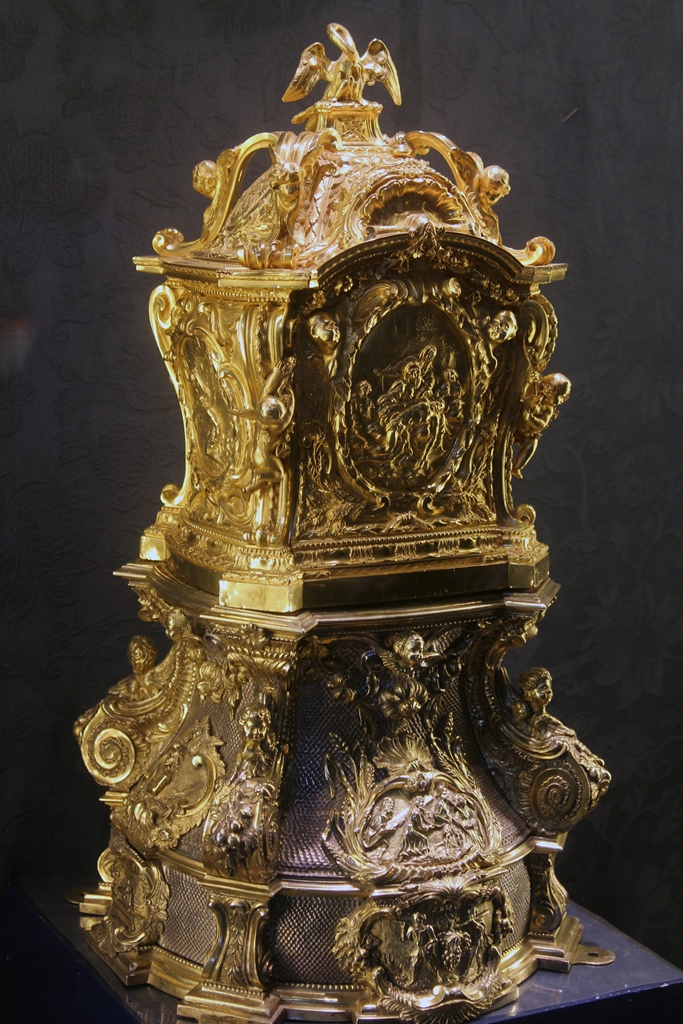
Urn and Stand for Holy Thursday (18th C.)
Also included in the price of admission is the opportunity to scale the cathedral's 344-foot Giralda.
Nella was fatigued and had done this on our previous visit, so she waited in the cathedral while
Philip and I made the climb. As on our previous visit, the view of Seville's old town was unsurpassed.
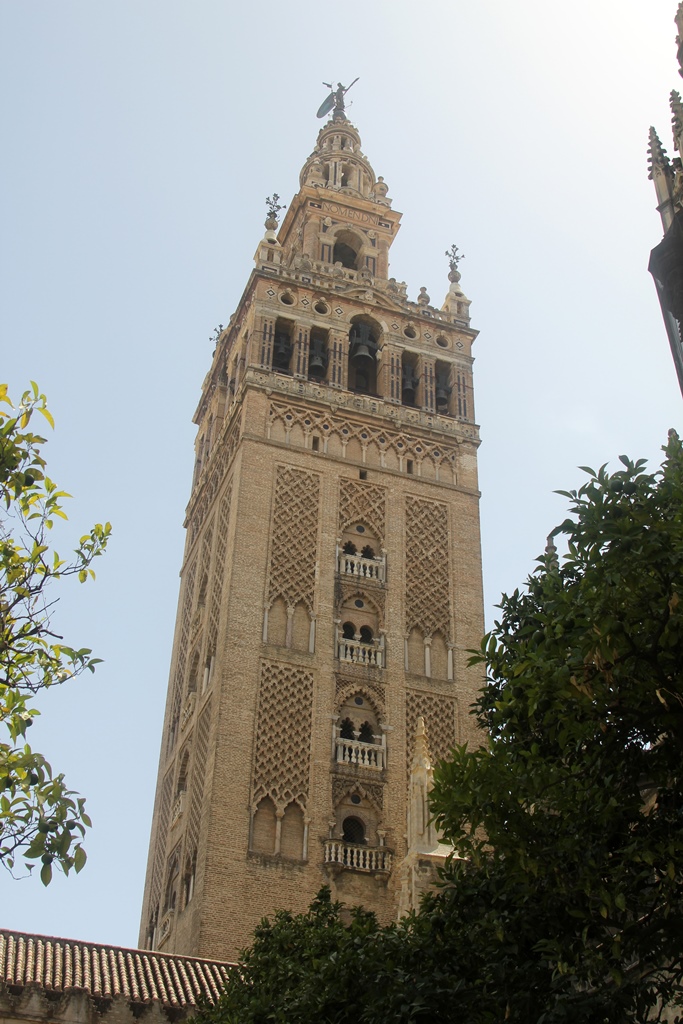
The Giralda
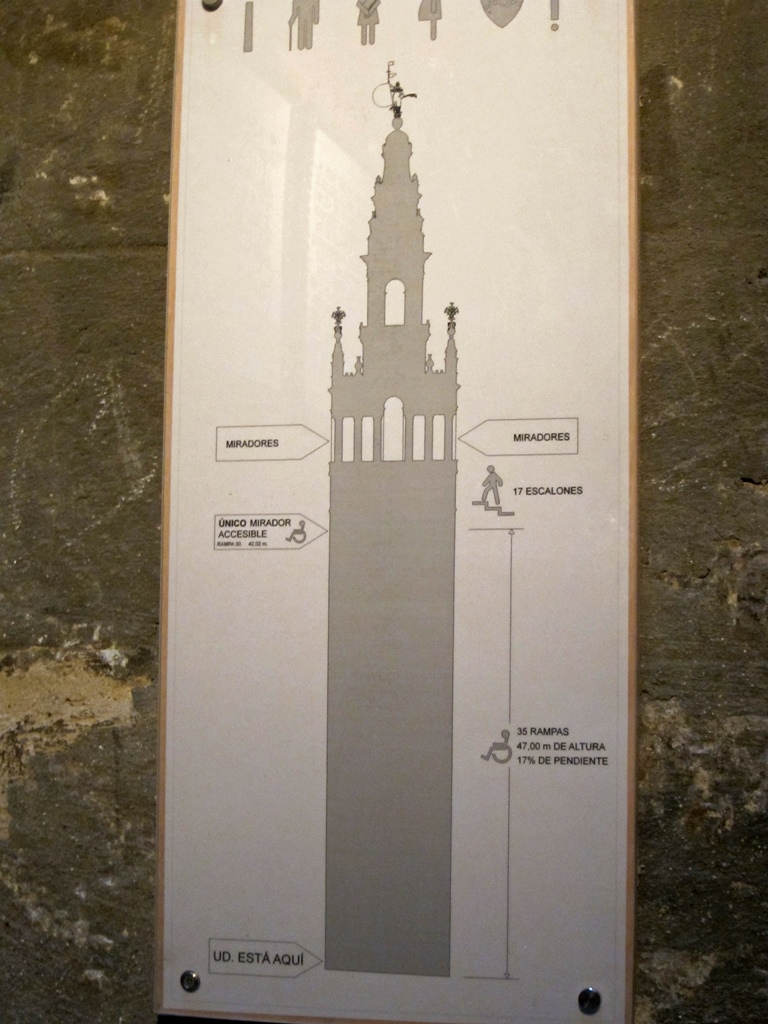
Giralda Diagram
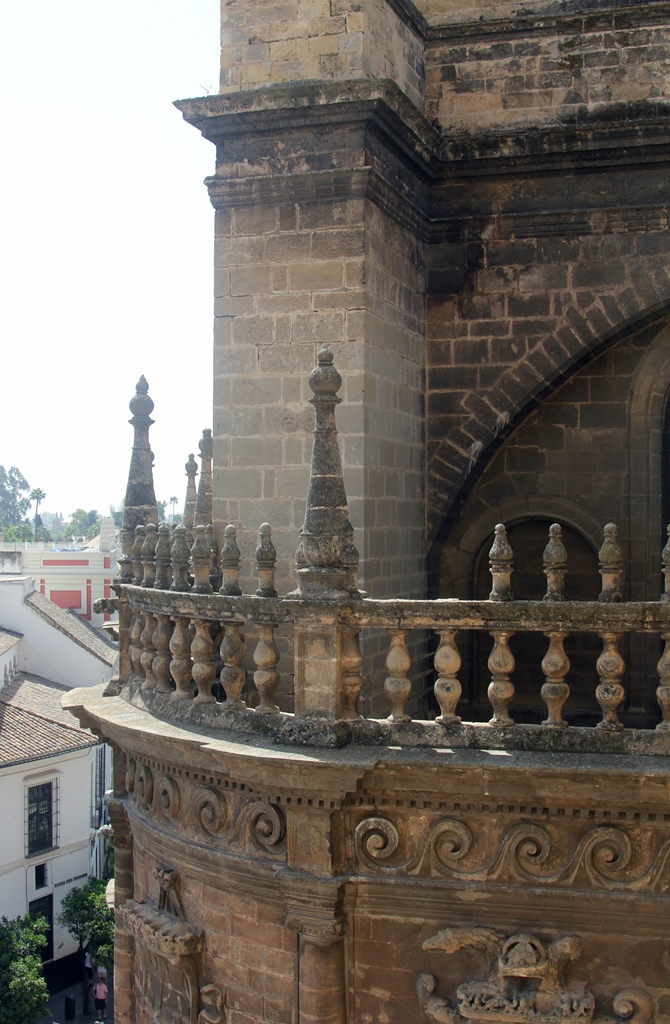
Cathedral Balcony
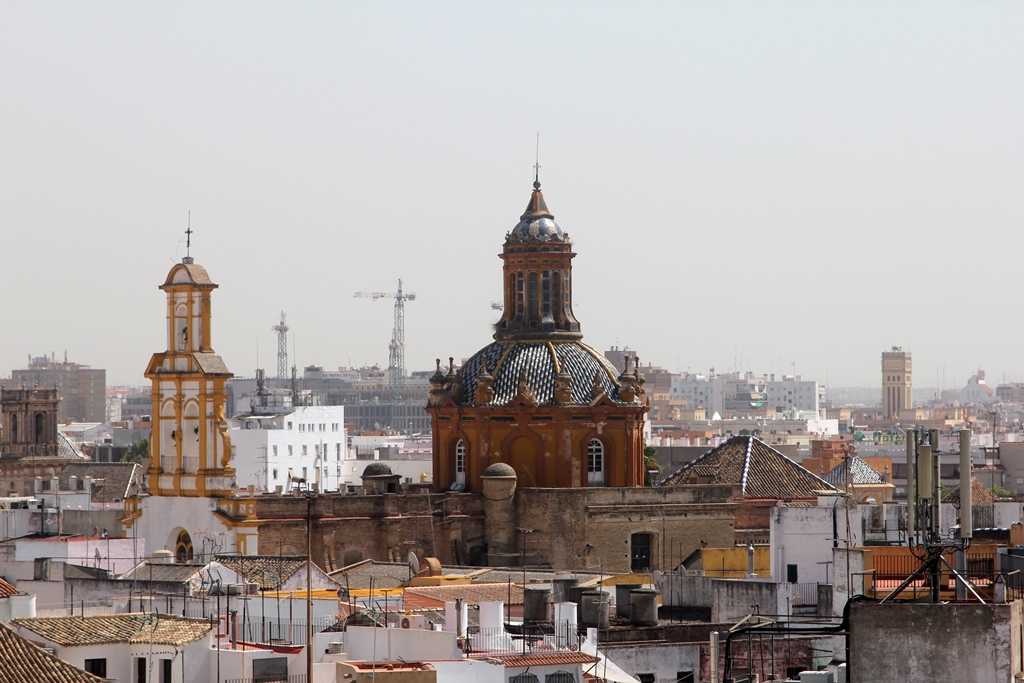
Parroquia de Santa Cruz de Sevilla
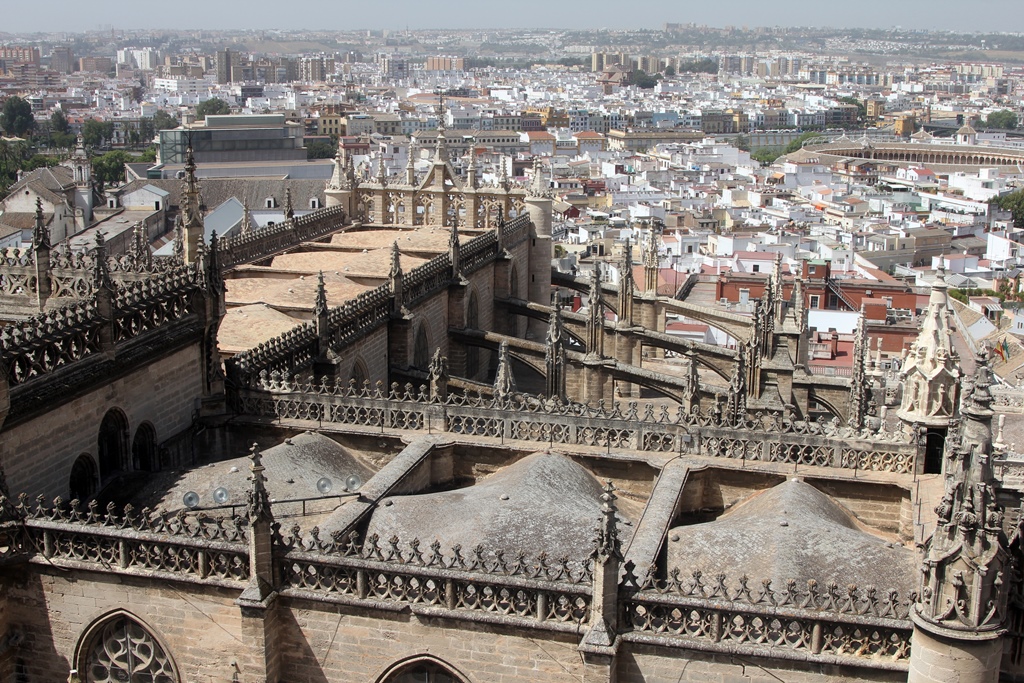
Roof, Buttresses and Bullring
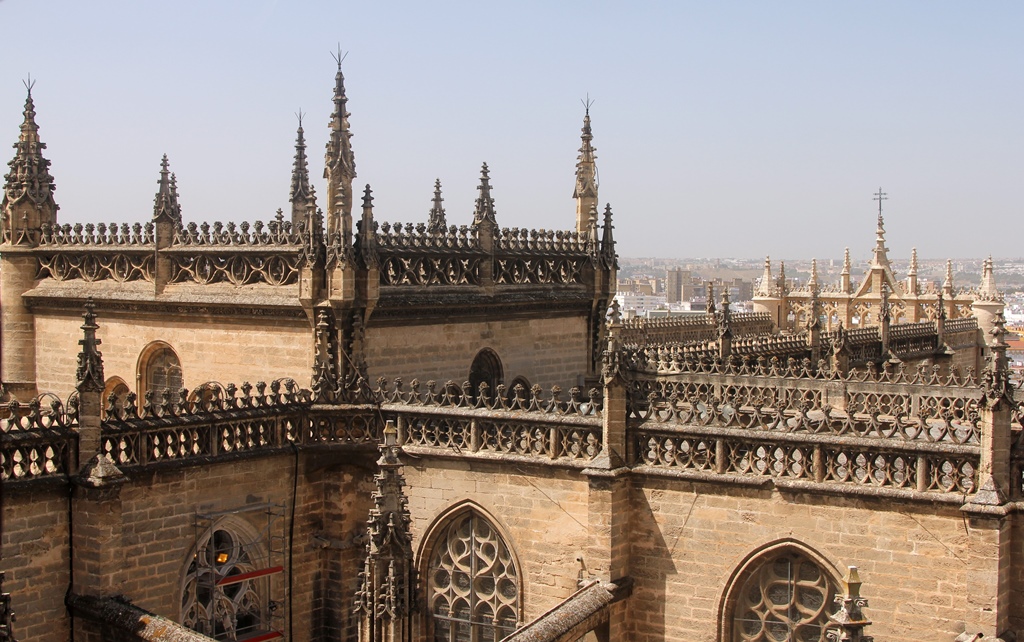
The Roof
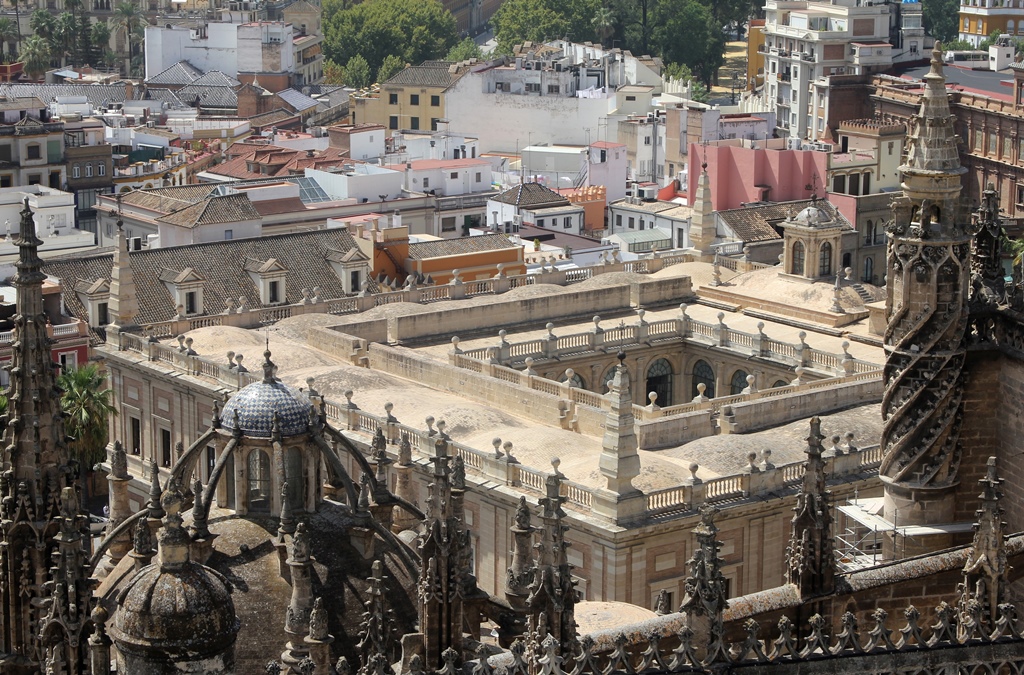
Archivo de Indias
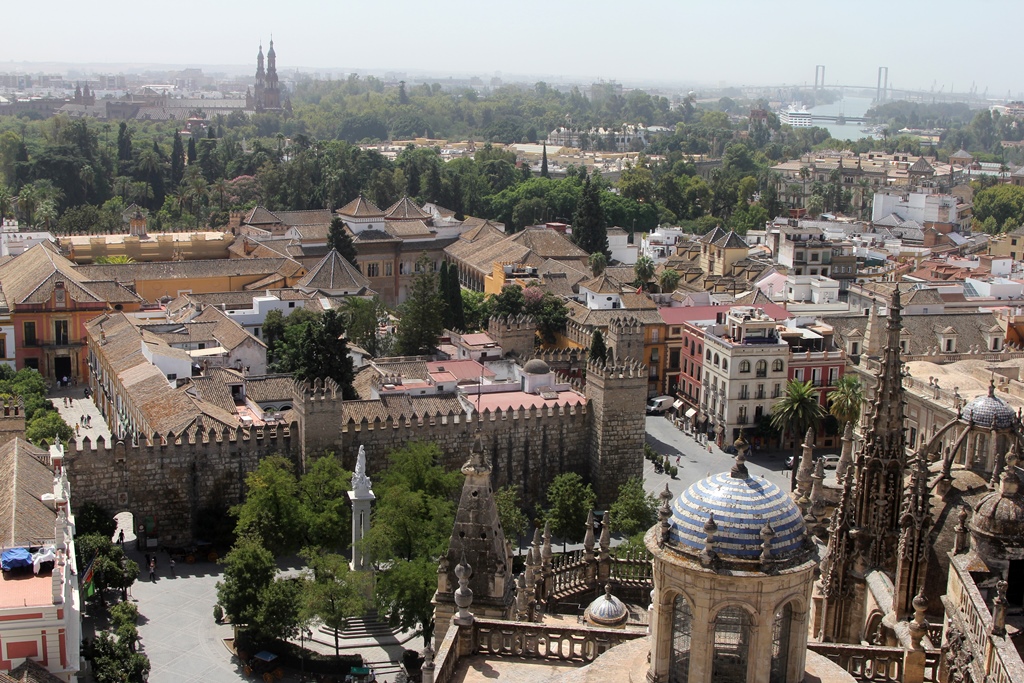
The Alcázar
After descending, Philip and I found Nella and exited the cathedral into the Patio de los Naranjos,
and from the courtyard we left the cathedral grounds by way of the Puerta del Perdón (Door of
Forgiveness).
Central Fountain, Puerta del Perdón
From the cathedral, we found some lunch and then crossed the Plaza del Triunfo to our next
target for the day, Seville's Royal Alcázar.



